In a world where health is paramount, the pharmaceutical industry stands as a formidable pillar, relentlessly pursuing scientific breakthroughs and life-saving innovations. With each passing year, pharmaceutical companies around the globe strive to deliver cutting-edge medicines, therapies and vaccines that impact the lives of millions.
In this in-depth article, we embark on a captivating journey to uncover the top 30 pharma and biotech companies that have been instrumental in shaping the future of medicine. We delve into the driving forces behind their successes and shed light on the groundbreaking research that has earned them a place among the elite in the pharmaceutical arena.
Join us as we present an in-depth analysis of each company’s revenue, net income, R&D investments, core therapeutic areas, market presence and strategic collaborations. The order of the companies presented in this article is based on their 2022 full year or fiscal year revenue.
Whether you’re an industry enthusiast or simply intrigued by the remarkable strides made in modern medicine, this article promises to be an insightful and inspiring guide to the leading pharma and biotech companies at the forefront of innovation and human welfare.
Join us as we celebrate the accomplishments and resilience of the top 30 pharma and biotech companies, highlighting their unyielding dedication to shaping a healthier, more prosperous world for all.
Note: When it comes to companies that report in foreign currencies, the conversion to US dollars utilizes the average annual exchange rates reported by the US Federal Reserve.
RELATED: Top 10 Medical Device Companies in 2023: Statistics and Trends
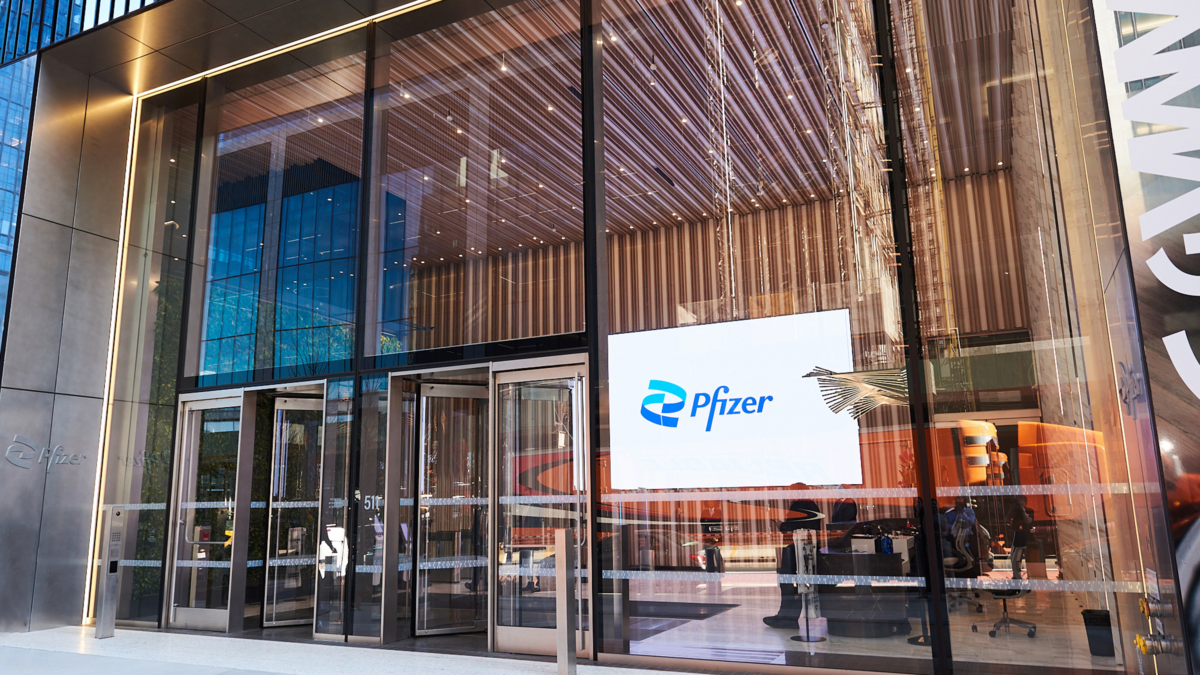
1) Pfizer
2022 Revenue: Pfizer reported an annual revenue of $100.33 billion in 2022, a 23.43 percent increase from its 2021 revenue of $81.29 billion.
2022 Net Income: Pfizer’s net income for 2022 was $31.37 billion, a 42.74 percent increase from $21.98 billion in 2021.
2022 R&D Spend: Pfizer’s R&D expenses during 2022 were $11.43 billion, a 10.31 percent increase from the $10.36 billion that Pfizer spent on R&D in 2021.
Pfizer Inc. is a global pharmaceutical company, working across both developed and emerging markets. Most of the company’s revenue comes from the manufacture and sale of biopharmaceutical products. They are committed to capitalizing on growth opportunities primarily through the advancement of their own product pipeline and constantly improving their existing products, as well as through business development activities.
Their large revenue growth from 2021 to 2022 can be attributed to several significant business development activities in 2022, predominantly acquisitions. For example, in March 2022, Pfizer acquired Arena, a clinical-stage company developing therapies for various immune-inflammatory diseases. The acquisition of GBT, a biopharmaceutical company developing treatments to underserved patient communities, was completed in October 2022. At this time, Pfizer also acquired Biohaven, the company behind Nurtec ODT/Vydura (rimegepant), a therapy for acute and episodic migraines in adults.
In the last quarter of 2021, Pfizer underwent a change in their global structure and now manages their commercial operations through two segments: Biopharma, the innovative biopharmaceutical business, and PC1, their global contract development and manufacturing branch (and lead supplier of active pharmaceutical ingredients).
In the third quarter of 2022, the company underwent several more organizational changes to better leverage expertise in key areas. The changes included establishing a commercial structure within Biopharma, optimizing their R&D operations, prioritizing their internal portfolio and realigning enabling and platform functions across the company to support and optimize performance across the primary care, specialty care and oncology customer groups.
Pfizer’s Top 5 Best-Selling Drugs of 2022:
1) Comirnaty
Comirnaty is an mRNA-based vaccine indicated for the prevention of COVID-19. Pfizer’s total global revenue in 2022 from Comirnaty was $37.81 billion. Comirnaty was first approved by the US Food and Drug Administration (FDA) in August 2021 for individuals over the age of 16.
2) Paxlovid (nirmatrelvir/ritonavir)
Paxlovid is a dual-packaged oral medication for the treatment of COVID-19. It contains the antiviral medications nirmatrelvir and ritonavir. It is indicated for people with positive SARS-CoV-2 tests who are at high risk for progressing to severe COVID-19. Pfizer’s total global revenue from Paxlovid was $18.93 billion in 2022. Paxlovid was first authorized under the FDA Emergency Use Authorization in December 2021; however, it has received FDA approval on May 25, 2023. Although initially provided at no cost since the US government purchased 20 million courses of Paxlovid priced at around $530 for a five-day course, Paxlovid is anticipated to reach the private market in the middle of 2023.
3) Eliquis (apixaban)
Eliquis is a factor Xa inhibitor (xaban) anticoagulant (blood thinner), indicated for reducing the risk of stroke and systemic embolism in patients with nonvalvular atrial fibrillation. Pfizer’s total global revenue from Eliquis was $6.48 billion in 2022. Eliquis was first approved by the FDA in December 2012, and the average price of Eliquis without insurance is approximately $696 for a 30-day prescription of 60, 5 mg tablets.
4) Prevnar family
The Prevnar family of drugs are vaccinations indicated for the prevention of invasive disease caused by Streptococcus pneumoniae serotypes. Pfizer’s total global revenue from the Prevnar family of vaccines was $6.34 billion in 2022. Prevnar 13 (PCV13, a 13-valent conjugate vaccine for the prevention of disease caused by 13 S. pneumoniae serotypes) replaced the company’s first pneumococcal conjugate vaccine Prevnar (PCV7, approved by the FDA in February 2000) in a February 2010 FDA approval. The private sector cost of Prevnar 13 is approximately $226.43 for a pediatric dose. In addition, the FDA approved Pfizer’s pneumococcal 20-valent conjugate vaccine, Prevnar 20, for the first time in June 2021. The private sector price of Prevnar 20 is around $253.96 per dose.
5) Ibrance (palbociclib)
Ibrance is a chemotherapy drug indicated for hormone receptor positive (HR+), human epidermal growth factor receptor 2-negative (HER2-) metastatic breast cancer. It is a CDK 4/6 inhibitor that is taken in combination with other hormonal therapies to stop the growth of cancer and healthy cells. Pfizer’s total global revenue from Ibrance was $5.12 billion in 2022. Ibrance was first approved by the FDA in February 2016, and without insurance, the price of Ibrance is approximately $15,886 for a supply of 21 capsules.
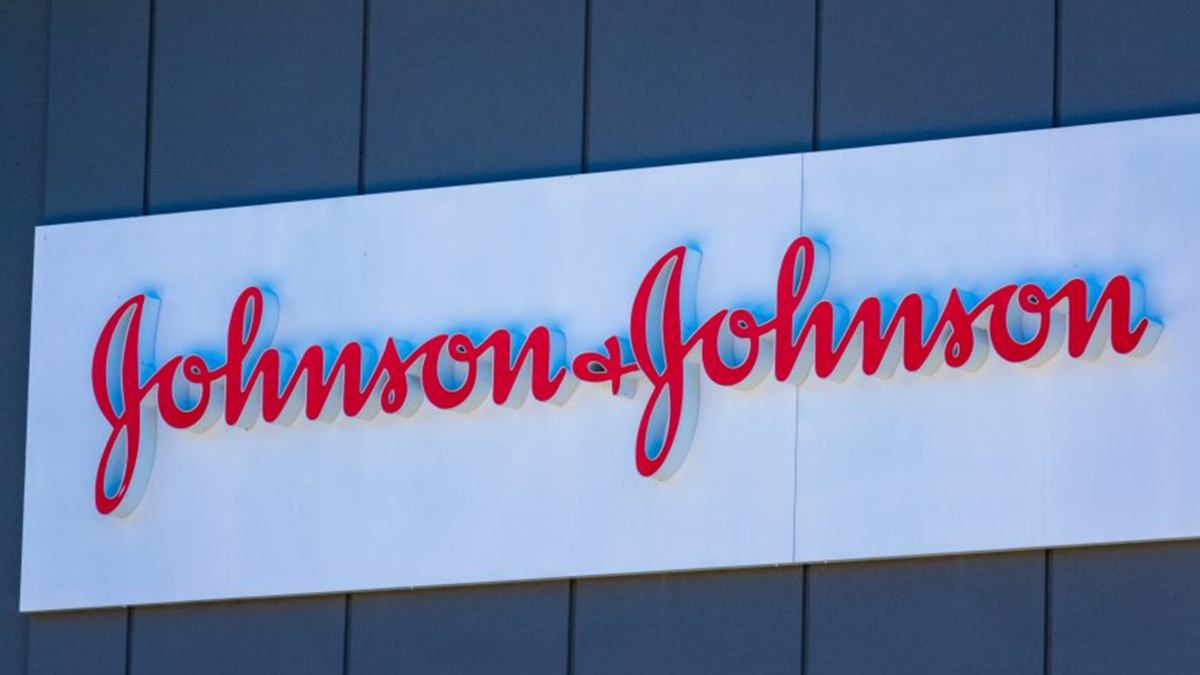
2) Johnson & Johnson
2022 Revenue: Johnson & Johnson’s annual revenue for 2022 was $94.94 billion, a 1.25 percent increase from its annual revenue of $93.78 billion in 2021.
2022 Net Income: Johnson & Johnson’s annual net income for 2022 was $17.94 billion, a 14.07 percent decrease from its annual net income of $20.88 billion in 2021.
2022 R&D Spend: In 2022, Johnson & Johnson spent $14.60 billion on R&D expenses, a 0.75 percent decrease from the $14.71 billion the pharma giant spent on R&D in 2021.
Johnson & Johnson (J&J), one of the world’s largest pharmaceutical companies, is routinely ranked first in finance reports, but this year falls behind Pfizer. The company is comprised of several units, and the largest is Johnson & Johnson’s pharma unit which generated $52.56 billion in 2022, a 1.71 percent growth from the $51.68 billion in pharmaceutical sales from 2021. Its other segments consist of medical devices and consumer healthcare, which generated $27.43 billion and $14.95 billion, respectively, in 2022.
The top drivers of Johnson & Johnson’s performance were their immunotherapy Stelara (ustekinumab), cancer drug Darzalex (daratumumab) and prostate cancer therapy Erleada (apalutamide), among several others that substantially contributed to earnings.
In contrast, several drugs experienced sale declines, such as Remicade (infliximab), an old immunology medication that continues to decline due to the rise of biosimilars since 2016. Johnson & Johnson’s annual 2022 revenue from Remicade was $2.34 billion, a 26.55 percent decline from the $3.19 billion the drug generated in 2021. Additionally, Imbruvica (ibrutinib), a blood cancer medication developed in partnership with AbbVie, also declined in sales in the past year. Johnson & Johnson’s total earnings from Imbruvica were $3.78 billion in 2022, a 13.39 percent decline since 2021 when Imbruvica generated $4.37 billion.
A novel challenge Johnson & Johnson will face in the coming year is that their top drug, Stelara, may enter a similar situation to Remicade, in that it will come head-to-head with emerging biosimilars. Stelara’s patents are expiring in September 2023, while a handful of biosimilar drugs are in late-stage development or seeking FDA approval.
Johnson & Johnson’s Top 5 Best-Selling Drugs of 2022:
1) Stelara (ustekinumab)
Stelara is an immunosuppressant biologic therapy that blocks the IL-12 and IL-23 proteins that play a role in plaque psoriasis and Crohn’s disease. The FDA approved the drug over a decade ago in September 2009. Johnson & Johnson’s total global earnings from Stelara were $9.72 billion in 2022, a 6.45 percent increase from the $9.13 billion the drug generated in 2021. The list price of Stelara was stated to be $25,497.12 every eight weeks for the 90 mg dose, according to the manufacturer.
2) Darzalex (daratumumab)
Darzalex is a targeted monoclonal antibody that slows or stops the progression of multiple myeloma (a blood cancer) by binding to the CD38 protein on multiple myeloma cells. The total global revenue from Darzalex was $7.98 billion in 2022, a 32.44 percent increase from $6.02 billion in 2021. The medication was approved by the FDA in November 2015, and the current cost of Darzalex (20 mg/mL) is approximately $714 for a 5 mL supply. Based on observed doses, the estimated total cost for a 52-week treatment with daratumumab can range from around $190,979.19 to $213,610.39.
3) Invega Sustenna/Xeplion and Invega Trinza/Trevicta (paliperidone palmitate)
Invega is a long-acting, injectable atypical antipsychotic used for the treatment of schizophrenia in adults. The medication rebalances dopamine and serotonin levels in the brain, improving patients’ thinking, mood and behaviour. The different variations of the drug can be taken either as an extended-release oral tablet or extended-release intramuscular suspension. The global revenue for Invega products was $4.14 billion in 2022, a 2.93 percent increase from $4.02 billion in 2021. Invega was first approved by the FDA in December 2006, and costs about $397 without insurance for a supply of 30 oral, extended release 1.5 mg tables.
4) Imbruvica (ibrutinib)
Imbruvica is approved for the following indications: Adults with chronic lymphocytic leukemia (CLL)/small lymphocytic lymphoma (SLL); Adults with CLL/ SLL with 17p deletion; adults with Waldenström’s macroglobulinemia (WM); and adults and children one year of age and older with chronic graft versus host disease (cGVHD) after failure of one or more lines of systemic therapy. Johnson & Johnson’s 2022 global revenue from Imbruvica was $3.78 billion, a 13.39 percent decrease from $4.37 billion in 2021. Imbruvica was first approved by the FDA in November 2013 and the price of Imbruvica is around $484 per tablet (without insurance).
5) Tremfya (guselkumab)
Tremfya is a monoclonal antibody that blocks IL-23 and is used to treat adults with moderate to severe plaque psoriasis, and for adults with active psoriatic arthritis. Global revenue from Tremfya was $2.67 billion in 2022, a 25.43 percent increase from $2.13 billion in 2021. First FDA-approved in July 2017 for plaque psoriasis, the list price for a 30-day supply of Tremfya was stated to be $6,292, according to the manufacturer.
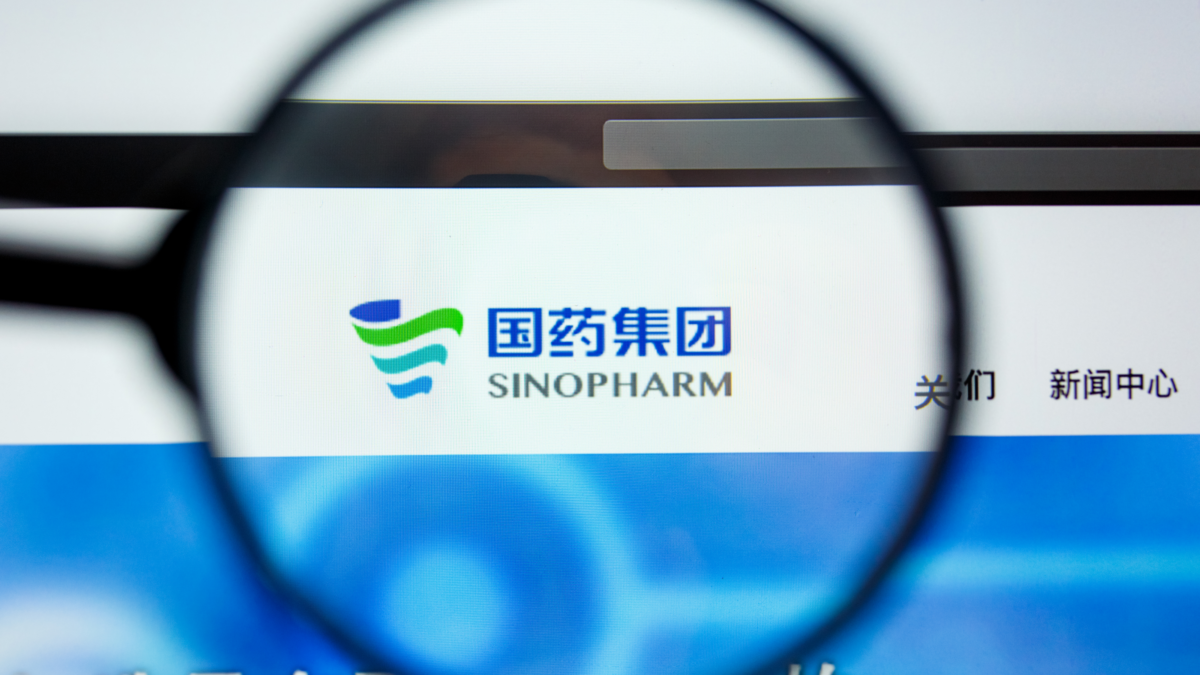
3) Sinopharm
2022 Revenue: Sinopharm’s revenue was 552.15 billion CYN ($82.05 billion USD) in 2022, a 5.97 percent increase from 521.05 billion CYN ($80.77 billion) in 2021.
2022 Profit for the Year: Sinopharm’s profit for the year of 2022 was 14.35 billion CYN ($2.13 billion USD), a 9.80 percent increase from 13.06 billion CYN ($2.03 billion USD) in 2021.
From 2021 to 2022, the recurring outbreaks of the COVID-19 pandemic brought some challenges to Sinopharm’s business development; however, the company coordinated pandemic prevention and control, high quality development and business development, and saw an increase in revenue over the year.
Over the past year, the company promoted the innovation of new supply chain models and services to expand growth. Sinopharm formulated personalized marketing promotion programs to create drug marketing systems with the company’s characteristics.
By the end of 2022, strategic agreements were signed with several domestic and foreign pharmaceutical companies, including Novartis China, Santen Pharmaceutical, Pfizer and Boehringer. During 2022, sales of various pharmaceutical products (including four anti-tumor drugs from Novartis) increased by more than 40 percent.
During 2022, Sinopharm followed industry transformation trends, strengthened their distribution network capabilities and ensured growth of key regions and markets. They note improvements in revenue shares in regions including Guangdong, Guangxi, Central China, Yangtze River Delta and North China. Overall, due to their enhanced competitive advantage, the group is a leader in the pharmaceutical circulation market.
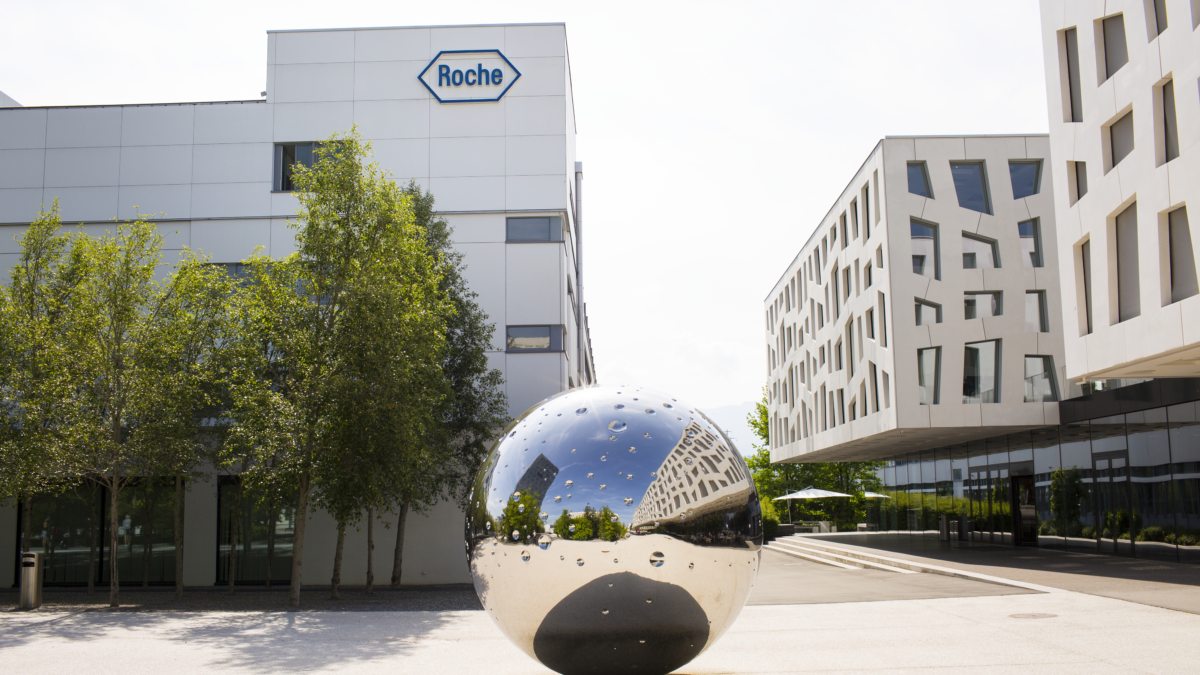
4) Roche
2022 Revenue: Roche’s annual revenue in 2022 was 63.28 billion CHF ($66.26 billion USD), a 0.76 percent increase from 62.80 billion CHF ($68.68 billion USD) in 2021.
2022 Net Income: Roche’s net income was 13.53 billion CHF ($14.17 billion USD) in 2021, a 9.40 percent decrease from 14.94 billion CHF ($16.33 billion USD) in 2021.
2022 R&D Spend: In 2022, Roche spent 14.05 billion CHF ($14.72 billion USD) on R&D, a 2.52 percent increase from the 13.71 billion CHF ($14.99 billion USD) the company spent on R&D in 2021.
Roche experienced several setbacks in 2022, in their pipeline, against emerging biosimilars and a decline in their COVID-19 sales that resulted in just a 0.8 percent revenue increase over the past year. Notably, sales from their COVID-19 drug Actemra (tocilizumab) dropped significantly by 22 percent. The company expects to lose approximately 5 billion Swiss francs (around $5.2 billion USD) in revenue from COVID-related sales this year.
The emergence of biosimilars is new competition for Roche’s main cancer treatments (Rituzan [rituximab], Herceptin [trastuzumab] and Avastin [bevacizumab]), which resulted in a decrease in revenue by about 1.9 billion CHF (about $2.0 billion USD). Some drugs experienced continued growth in 2022: multiple sclerosis drug Ocrevus (ocrelizumab) had a 17 percent increase in sales, sales of hemophilia A therapy Hemlibra (emicizumab) increased by 27 percent and sales of cancer treatment Tecentriq (atezolizumab) increased by 14 percent. But all three drugs have new competitors. For example, Ocrevus will be challenged by Novartis’ Kesimpta (ofatumumab) and TG Therapeutics’ Briumvi (ublituximab). Both are anti-CD20 agents. Meanwhile, BioMarin’s gene therapy Roctavian is approved by the FDA for the treatment of hemophilia A.
Although Roche’s products are protected by patents, they would have to enter expensive litigation to enforce them and other intellectual property rights. Roche’s business, operations and financial condition could be adversely affected by a loss of market exclusivity for their major products due to competition from biosimilars and other non-comparable biologics. These medications are offered at much lower prices and can result in significant reduction in sales for Roche’s products.
In September 2022, Roche acquired Good Therapeutics for an upfront payment of $250 million, and has access to their PD-1-regulated IL-2 program. The company also continued the implementation of some global restructuring plans started in previous years, as well as initiating a portfolio prioritization program for their Pharmaceutical division.
Roche’s Top 5 Best-Selling Drugs of 2022:
1) Ocrevus (ocrelizumab)
Ocrevus is a monoclonal antibody administered intravenously, indicated for the treatment of relapsing or primary progressive multiple sclerosis in adults. The monoclonal antibody targets CD20, a protein found on the surface of B lymphocytes (B cells). Roche’s total global revenue from Ocrevus was 6.04 billion CHF ($6.32 billion USD) in 2022. First FDA-approved in March 2017, the list price of Ocrevus was about $75,102 annually, as reported by the manufacturer.
2) Perjeta (pertuzumab)
Perjeta is a monoclonal antibody approved for use in combination with chemotherapy (and Herceptin [trastuzumab]) to treat HER2+, locally advanced or early stage breast cancer prior to surgery, or after surgery in HER2+ breast cancer that has a higher likelihood of returning. The total revenue in 2022 from Perjeta was 4.09 billion CHF ($4.28 billion USD). Perjeta was first approved by the FDA in June 2012, and the list price of Perjeta is approximately $5,900 a month (or $71,000 annually). In combination with Herceptin (around $54,000 annually), the breast cancer treatment surpasses $100,000 per year.
3) Hemlibra (emicizumab)
Another monoclonal antibody in Roche’s roster, Hemlibra functions similarly to factor VIII, a protein that people with hemophilia A do not have in their blood. It can help maintain a blood clotting level of approximately 15 percent of that maintained by factor VIII. Hemlibra’s total global revenue was 3.82 billion CHF ($4.00 billion USD) in 2022. Approved by the FDA in November 2017, the mean annual list price of Hemlibra is around $450,000.
4) Tecentriq (atezolizumab)
Tecentriq is a monoclonal antibody that binds with the PD-L1 protein expressed by tumor cells and tumor-infiltrating immune cells. It is indicated for several cancers, including various lung cancers, liver cancer and melanoma. Tecentriq was first approved by the FDA in May 2016, and a monthly treatment of Tecentriq may cost around $14,540 depending on the dosage schedule. In 2022, Roche’s total revenue from Tecentriq was 3.72 billion CHF ($3.89 billion USD).
5) Actemra (tocilizumab)
Actemra is also a monoclonal antibody approved to treat adults with active rheumatoid arthritis or giant cell arteritis. Taken as an intravenous infusion or subcutaneous injection, this drug blocks the inflammatory IL-6, improving joint pain and swelling. Roche’s global revenue was from Actemra was 2.70 billion CHF ($2.83 billion USD) in 2022. Actemra was first approved by the FDA in January 2010, and the annual costs of Actemra, depending on the dosage, can range from around $8,000 to over $18,400 without insurance.
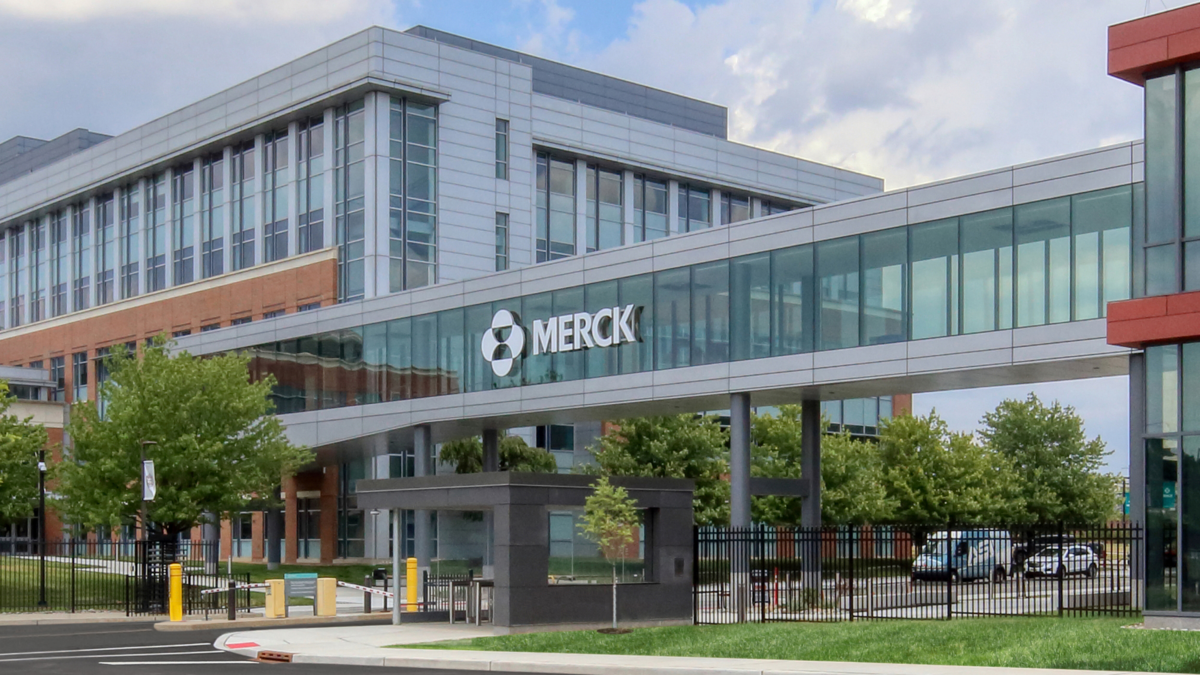
5) Merck & Co
2022 Revenue: Merck’s annual revenue was $59.28 billion in 2022, a 21.72 percent increase from $48.70 billion in 2021.
2022 Net Income: Merck reported a net income of $14.52 billion in 2021, which was a 11.27 percent increase from Merck’s net income of $13.05 billion in 2021.
2022 R&D Spend: In 2022, Merck spent $13.55 billion on R&D, a 10.64 percent increase from the $12.25 billion Merck spent on R&D in 2021.
Although Merck did not develop a vaccine for COVID-19, 2022 was still a positive year for the company, which is reflected in the sustained revenue growth during the year. The annual worldwide sales were $59.3 billion, a 22 percent increase from 2021. This growth can be largely attributed to the temporary success of Lagevrio (molnupiravir), a new oral antiviral treatment from Merck. Lagevrio made up a large proportion of Merck’s revenue increase with $5.68 billion in sales in 2022 — though this year the company is expecting a decline to $1 billion. This is largely due to failed trials as a prophylaxis resulting in the European Committee for Medical Products (CHMP) recommending against the approval of Lagevrio.
Other drugs also contributed to Merck’s revenue growth. Keytruda and Gardasil/Gardasil 9 sales also grew 22 percent to $20.94 billion and $6.90 billion, respectively. The company credits Gardasil’s sales to high demand, especially in China, over the past year. Additional beneficial changes to the company’s pipeline also contributed to their growth, including the acquisition of Imago BioSciences in November 2022 for a total equity value of $1.35 billion and expanding their hematology portfolio, as well as agreements with Moderna and Kelun-Biotech, the latter with which they will be developing seven investigational preclinical antibody-drug conjugates for cancer treatment.
Merck is projecting their 2023 worldwide sales to amount to between $57.7 billion and $58.9 billion.
Merck’s Top 5 Best-Selling Drugs of 2022:
1) Keytruda (pembrolizumab)
Keytruda is a humanized antibody indicated for the treatment of a variety of cancers, including melanoma, head and neck cancer, lung cancer and cervical cancer, among others. This cancer immunotherapy blocks the PD-1 pathway, preventing cancer cells that express the PD-L1 protein from hiding, and helping the immune system find and fight the cancer cells. Keytruda was first FDA approved in September 2014, and the list price of Keytruda was about $10,897.12 per dose when given every three weeks, as reported by the manufacturer. Merck’s total global revenue from Keytruda was $20.94 billion in 2022.
2) Gardasil/Gardasil 9
The Gardasil non-infectious recombinant vaccines (prepared from the purified virus particles) are indicated for the prevention of cancer-causing infections due to the human papillomavirus (HPV). In 2022, Merck’s total revenue from Gardasil/Gardasil 9 was $6.90 billion. Gardasil was first approved by the FDA in June 2006, and the list price of individual doses of Gardasil 9 was reported to be $268.02, according to the manufacturer.
3) Lagevrio (molnupiravir)
Lagevrio is an investigational antiviral drug indicated for the treatment of currently-diagnosed mild or moderate COVID-19 infection in adults who are at risk of progressing to severe infection, hospitalization or death. Lagevrio is not approved by the FDA, but was granted Emergency Use Authorization for use during the COVID-19 pandemic. Lagevrio costs the US government about $700 for each course of treatment. Merck’s total global revenue from Lagevrio was $5.68 billion in 2022.
4) Januvia/Janumet (sitagliptin)
Januvia/Janumet is an anti-diabetic medication for the treatment of type 2 diabetes. It is a dipeptidyl peptidase-4 inhibitor that keeps insulin levels stable and reduces the amount of glucose produced by the body. Januvia was first approved by the FDA in October 2006. The cost of Januvia is around $664 for a 30-day supply (without insurance). Merck’s total revenue from Januvia/Janumet was $4.51 billion in 2022.
5) ProQuad/M-M-R II/Varivax
ProQuad, M-M-R II and Varivax are all measles, mumps, rubella and varicella vaccines indicated for different age groups. They are live, lyophilized (attenuated virus) preparations for subcutaneous injection. In total, these drugs generated $2.24 billion in 2022. ProQuad was first approved by the FDA in September 2005, whereas Varivax was approved by the FDA in March 1995. M-M-R II was approved even earlier, in 1978. The private sector costs/dose of pediatric versions of M-M-R II, ProQuad and Varivax are $89.87, $262.37 and $159.99, respectively.
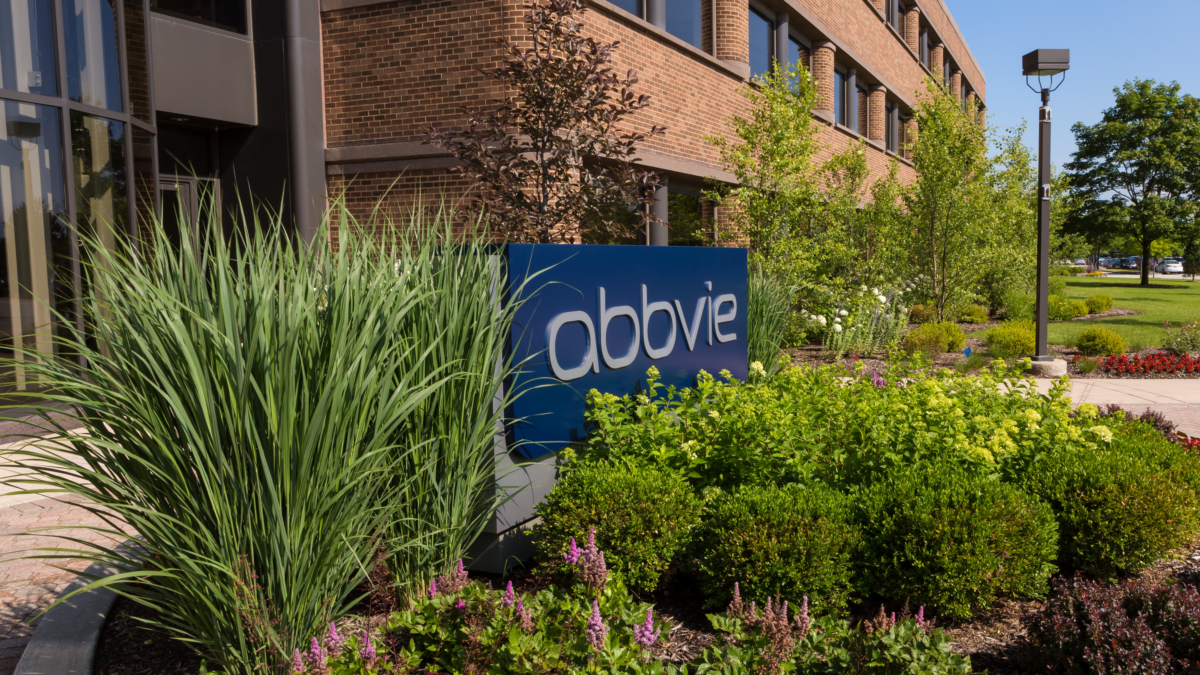
6) AbbVie
2022 Revenue: AbbVie’s annual revenue was $58.05 billion in 2022, a 3.30 percent increase from $56.20 billion in 2021.
2022 Net Income: In 2022, AbbVie had an annual net income of $11.84 billion, a 2.55 percent increase from $11.54 billion in 2021.
2022 R&D Spend: In 2022, AbbVie spent $6.51 billion on R&D, a 5.95 percent decrease from the $6.92 billion AbbVie spent on R&D in 2021.
AbbVie’s revenue in 2022 was not all that different from 2021 and saw an increase of about 3.3 percent over the year. One large contributor to the growth was their immunology portfolio, bringing in over $28.92 billion in 2022, an increase of 14.40 percent since 2021. The main sources of this revenue were sales from Humira (adalimumab), Skyrizi (risankizumab) and Rinvoq (upadacitinib).
Their hematologic oncology portfolio brought in $6.58 billion, a decrease of 9.01 percent since 2021, largely due to a decline in sales of Imbruvica (ibrutinib), a cancer treatment. AbbVie’s neuroscience portfolio saw a total profit of $6.53 billion, a 10.14 percent increase since 2021, predominantly due to Botox sales for therapeutic uses.
The company is looking at a loss of exclusivity for Humira after 20 years due to the release of Amjevita by Amgen, a biosimilar. At least seven more Humira biosimilars are expected to debut in the coming year, but AbbVie has a solid foundation that will allow them to absorb the loss.
AbbVie has also had some approvals made for their drugs, such as the European Commission approval of Skyrizi (risankizumab) and another FDA approval of Vraylar (cariprazine), which marks the fourth indication for Vraylar, this time as an adjunctive therapy to antidepressants for major depressive disorder.
Late in 2022, AbbVie partnered with HotSpot Therapeutics and announced an exclusive worldwide collaboration and option to license agreement for their interferon regulatory factor 5 (IRF5) inhibitor program for autoimmune disease treatment. This partnership will expand the company’s immunology pipeline. A similar collaboration with Anima Biotech will help discover and develop mRNA biology modulators for targets across immunology and oncology. AbbVie will have exclusive licencing rights to further develop and commercialize the new programs.
AbbVie’s Top 5 Best-Selling Drugs of 2022:
1) Humira (adalimumab)
Humira is a monoclonal antibody used to treat rheumatoid arthritis and psoriatic arthritis, as well as other immune conditions like Crohn’s and ulcerative colitis. Humira was first approved by the FDA 20 years ago in December 2002. The list price of a four-week supply of Humira was reported to be $6,922.62 in January 2023, according to the manufacturer. AbbVie’s total global revenue for Humira was $21.24 billion in 2022.
2) Botox Therapeutic/Cosmetic
Botox, or botulinum neurotoxin, is a neurotoxic protein produced by the Clostridium botulinum bacteria. It blocks the release of the neurotransmitter acetylcholine from neuron axons at neuromuscular junctions, causing a localized paralysis. When the purified version of the protein is injected into the facial muscles, it results in a refreshed appearance as wrinkles become less pronounced due to a lack of movement at the injection sites. Botox is also used as therapeutic treatments for neck spasms, excessive sweating, lazy eyes and migraines. Botox was first approved by the FDA in 1989 for blepharospasms and strabismus in adults. Botox brought in a total of $2.72 billion in therapeutics and $2.62 billion in aesthetics in 2022, for a total of $5.33 billion. The price of Botox varies based on the units required, but is generally around $10 to $15 per unit.
3) Skyrizi (risankizumab)
Skyrizi, a humanized monoclonal antibody, is the first specific IL-23 inhibitor indicated for the treatment of moderately to severely active Crohn’s disease in adults who have had inadequate response, lost response or were intolerant to conventional or biologic therapy. First FDA-approved in April 2019 for the treatment of plaque psoriasis, the list price of one dose of Skyrizi was reported to be $19,743.61 in January 2023, according to the manufacturer. Skyrizi brought in a total revenue of $5.17 billion in 2022.
4) Imbruvica (ibrutinib)
Imbruvica is a small molecule drug that inhibits B-cell growth and survival by binding to the Bryton’s tyrosine kinase protein. This binding inhibits B-cell receptor pathways, which are overly active in B-cell cancers. It is indicated for mantle cell lymphoma and CLL or SLL. AbbVie’s total global revenue from Imbruvica was $4.57 billion in 2022. Imbruvica was first approved by the FDA in November 2013 and the price of Imbruvica is around $484 per tablet regardless of its strength (without insurance).
5) Rinvoq (upadacitinib)
In 2022, the total global revenue for Rinvoq was $2.52 billion. It is a Janus kinase (JAK) inhibitor pill that blocks inflammatory signals that are present at higher levels in people with inflammatory conditions, such as rheumatoid arthritis. Rinvoq is indicated for this disease in people who have not reacted appropriately to tumor necrosis factors as a treatment. Rinvoq was first FDA-approved in August 2019, and the list price of Rinvoq for a 30-day supply of the pills was $6,124.96 in January 2023, according to the manufacturer.
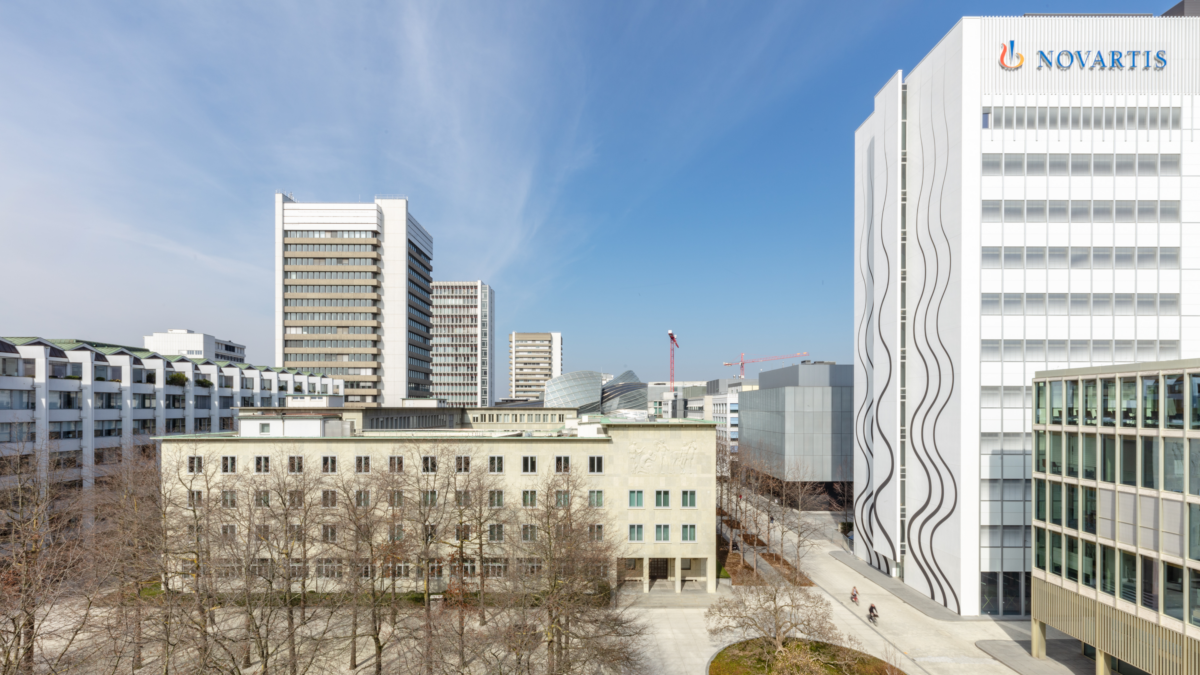
7) Novartis
2022 Revenue: Novartis’ annual revenue in 2022 was $50.55 billion, a 2.09 percent decrease from $51.63 billion in 2021.
2022 Net Income: In 2022, Novartis had an annual net income of $6.96 billion, a 71.04 percent decrease from its annual net income of $24.02 billion in 2021.
2022 R&D Spend: Novartis spent $10.00 billion on R&D in 2022, a 4.78 percent increase from the $9.54 billion the company spent on R&D in 2021.
In 2022, Novartis underwent several changes to its corporate structure. The company’s oncology and other therapeutic areas were merged into one unit, and the business was divided into US and international markets. These changes resulted in the dismissal of three C-level executives, as well as 8,000 employees, as the company aimed to transform into a leaner organization. The changes are expected to save Novartis about $1.5 billion in annual costs by 2024. Headquartered in Switzerland, the company is aiming to become one of the top five pharmaceutical companies in the United States by 2027 by taking a “US-first mindset.”
In terms of drugs, Novartis’ heart drug Entresto (sacubitril/valsartan) had increased sales, resulting in 31 percent growth in sales in the past year to $4.64 billion. The medication is now on track to surpass Cosentyx (secukinumab; an inflammatory disease therapy from Novartis) as the company’s best-selling product. In contrast, profit from Cosentyx increased by only 1 percent in the past year, to a total of $4.79 billion.
Other notably successful growth in pharmaceutical sales was seen in the company’s multiple sclerosis drug Kesimpta (ofatumumab), which doubled in sales to $1.09 billion in 2022. Kisqali (ribociclib), a CDK4/6 inhibitor, grew 31 percent in sales to $1.23 billion; however, there is large competition from Pfizer and Eli Lilly, and Kisqali lags behind its competitors.
Additional business operations include the FDA approval of a new radiotherapy called Pluvicto (lutetium Lu 177 vipivotide tetraxetan), which brought in $271 million in sales in 2022, though the company is struggling to keep up with demand after issues during manufacturing expansion. Developed in partnership with BeiGene, the PD-1 inhibitor tislelizumab is undergoing prolonged FDA review due to delays during the COVID-19 pandemic and encountered some regulatory setbacks.
Novartis’ Top 5 Best-Selling Drugs of 2022:
1) Cosentyx (secukinumab)
Cosentyx is a human IgG1k monoclonal antibody that binds to IL-17A, indicated for the treatment of psoriasis, ankylosing spondylitis and psoriatic arthritis. Like many interleukins, IL-17A causes inflammation, particularly in the skin and joints. Cosentyx was first approved by the FDA in January 2015, and the list price of Cosentyx was reported to be $6,924.26 a month for either 150 mg or 300 mg dose strength packages, and $3,462.13 for the 75 mg dose strength package in January 2023, according to the manufacturer. Total global revenue from Cosentyx was $4.79 billion in 2022.
2) Entresto (sacubitril/valsartan)
A combination drug, Entresto consists of neprilysin inhibitor sacubitril and angiotensin receptor blocker valsartan. Essentially, they are both antihypertensive drugs that reduce a patient’s blood pressure. It is used to treat adults with chronic heart failure to reduce their risk of death and hospitalization. Novartis’ total revenue from Entresto was $4.64 billion in 2022. Entresto was first FDA-approved in July 2015, and the list price of Entresto was reported to be $667.97 a month, according to the manufacturer.
3) Promacta/Revolade
Promacta (Revolade outside of the US) is a thrombopoietin (TPO) receptor agonist. The TPO receptor agonist regulates blood platelet production by binding to and activating TPO receptors on megakaryocyte cells and inducing signalling cascades that increase platelet production. Promacta/Revolade is indicated for both adults and children over one year of age with persistent or chronic thrombocytopenia, aplastic anemia and hepatitis C-associated thrombocytopenia. Promacta was first approved by the FDA in November 2008. Novartis’ total revenue from Promacta/Revolade was $2.09 billion in 2022. The list price of Promacta per month was reported to be $6,035.45, $10,921.67 and $16,382.51 for the 25 mg, 50 mg and 75 mg tablet doses, respectively, according to the manufacturer.
4) Gilenya (fingolimod)
Gilenya is a sphingosine-1-phosphate receptor modulator. It works by containing lymphocytes within the lymph nodes, preventing them from entering the central nervous system via the blood-brain barrier and causing an autoimmune reaction that destroys myelin on neurons. This drug is indicated for the treatment of relapsing multiple sclerosis and relapse-remitting disease and was approved for this purpose in September 2010 by the FDA. Novartis’ total revenue from Gilenya in 2022 was $2.01 billion, and the annual list price of Gilenya is about $95,594.
5) Tasigna (nilotinib)
Tasigna brought in Novartis a total revenue of $1.92 billion in 2022. It belongs to a class of medications known as tyrosine kinase inhibitors, which attack the growth of cancer cells while preserving normal cells. Tasigna was first approved by the FDA in October 2007 for chronic myelogenous leukemia with the Philadelphia chromosome. Novartis made $1.92 billion from worldwide sales of Tasigna in 2022. For a supply of 28 capsules, the price of Tasigna is about $4,895 (without insurance).
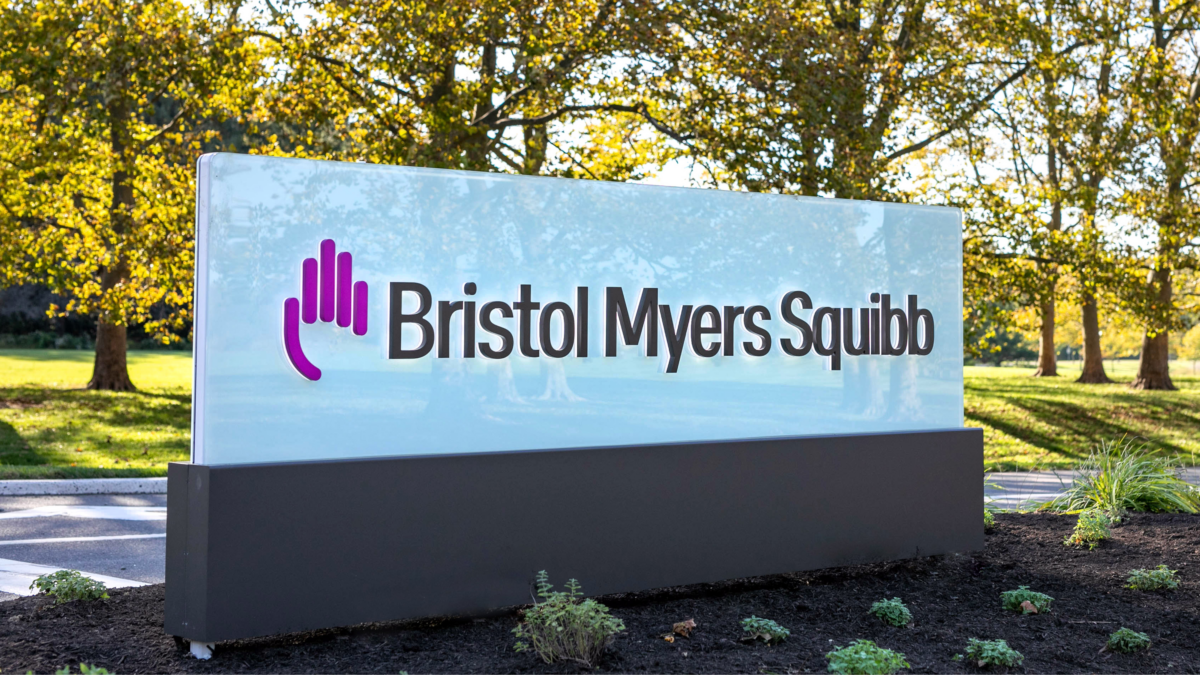
8) Bristol Myers Squibb
2022 Revenue: In 2022, Bristol Myers Squibb had an annual revenue of $46.16 billion, a 0.49 percent decrease from $46.39 billion in 2021.
2022 Net Income: Bristol Myers Squib had a net income of $6.33 billion in 2022, a 9.54 percent decrease from $6.99 billion in 2021.
2022 R&D Spend: In 2022, Bristol Myers Squib spent $9.51 billion on R&D, a 6.73 percent decrease from the $10.20 billion that the company spent on R&D in 2021.
Bristol Myers Squib (BMS) saw pharmaceutical sales drop from 2021 to 2022, with the slow decline occurring every quarter since the beginning of 2021. This can largely be attributed to a loss of exclusivity for their multiple myeloma drug Revlimid (lenalidomide). Revlimid sales peaked in 2021 at $12.82 billion and dropped 22.17 percent to $9.98 billion this past year. BMS is foreshadowing a further decline in the upcoming years.
Over the next year, BMS expects a 2 percent increase in growth if supported by large sales by star products like Eliquis (apixaban) and Opdivo (nivolumab), which are patent protected until 2026 and 2028, respectively. Additionally, three new products were approved in 2022 and are expected to have strong sales. The products are Opdualag (nivolumab/relatlimab) for melanoma, Camzyos (mavacamten) for obstructive hypertrophic cardiomyopathy and Sotyktu (deucravacitinib) for plaque psoriasis. In total, BMS predicts that the three drugs will bring in about $12 billion by 2025.
Several other novel medications from BMS are also growing quickly. For example, Reblozyl (luspatercept), an anemia drug, increased in sales by 30 percent to $717 million in 2022. Onureg (azacitidine), a leukemia therapy, also saw large growth of 70 percent to $124 million in 2022, and the multiple sclerosis drug Zeposia (ozanimod) generated $250 million in 2022, an 87 percent increase.
2022 was the first year on market for cell-based gene therapies Abecma (Idecabtagene vicleucel) and Breyanzi (lisocabtagene maraleucel), which generated $388 million and $182 million, respectively.
Bristol Myers Squibb’s Top 5 Best-Selling Drugs of 2022:
1) Eliquis (apixaban)
Eliquis is an anticoagulation medication used to reduce the risk of stroke or blood clots in people with atrial fibrillation. It is often prescribed to patients who are at risk of forming clots in their legs and lungs after hip or knee replacement surgery. The anticoagulant was first approved by the FDA in December 2012. In 2022, the total global revenue for Eliquis was $11.79 billion, and the list price for a 30-day supply of Eliquis was reported to be $561, according to the manufacturer.
2) Revlimid (lenalidomide)
Revlimid is an immune-modulating treatment, indicated for the treatment of multiple myeloma in combination with several other therapies. It works by supporting the function of the immune system to fight against cancer cells. This drug was first approved by the FDA in December 2005. Revlimid brought in a total revenue of $9.98 billion in 2022, and a supply of 28 capsules of Revlimid 2.5 mg can cost around $24,576 (without insurance).
3) Opdivo (nivolumab)
In 2022, Opdivo’s total global revenue sat at $8.25 billion. Opdivo is an IgG4 monoclonal antibody that blocks the PD-1 pathway as a checkpoint inhibitor, so that T cells are not blocked from attacking cancer cells. It is primarily indicated for the treatment of advanced stage non-small cell lung cancer that is metastatic, as well as advanced melanoma and kidney cancer. Opdivo was first approved by the FDA in December 2014. The list price of treatment with Opdivo 240 mg every two weeks was reported to be $7,194 per infusion and the list price of treatment with Opdivo 480 mg every four weeks was reported to be $14,389 per infusion, according to the manufacturer.
4) Pomalyst/Imnovid (pomalidomide)
Pomalyst, like Revlimid, is also an immunomodulatory agent, but more potent. It binds to a protein on multiple myeloma cancer cells called cereblon, resulting in the cell’s death. Pomalyst is also indicated for multiple myeloma. First FDA-approved in February 2013, total global revenue from Pomalyst in 2022 was $3.50 billion. A yearly supply of Pomalyst may cost around $147,302 (without insurance).
5) Orencia (abatacept)
Indicated for adult rheumatoid arthritis, Orencia is a fusion protein created from the fusion of IgG1 to extracellular domain of CTLA-4. It works by acting as an analog for CTLA-4, which prevents antigen-presenting cells from delivering a stimulatory signal and activating T cells, and thus reducing immune reactions. Orencia was first approved by the FDA in December 2005, and the list price of Orencia administered as an IV was reported to be $4,043 per infusion and the list price for self-injected Orencia was reported to be $5,373 per month, according to the manufacturer. Total revenue from Orencia was $3.46 billion in 2022.
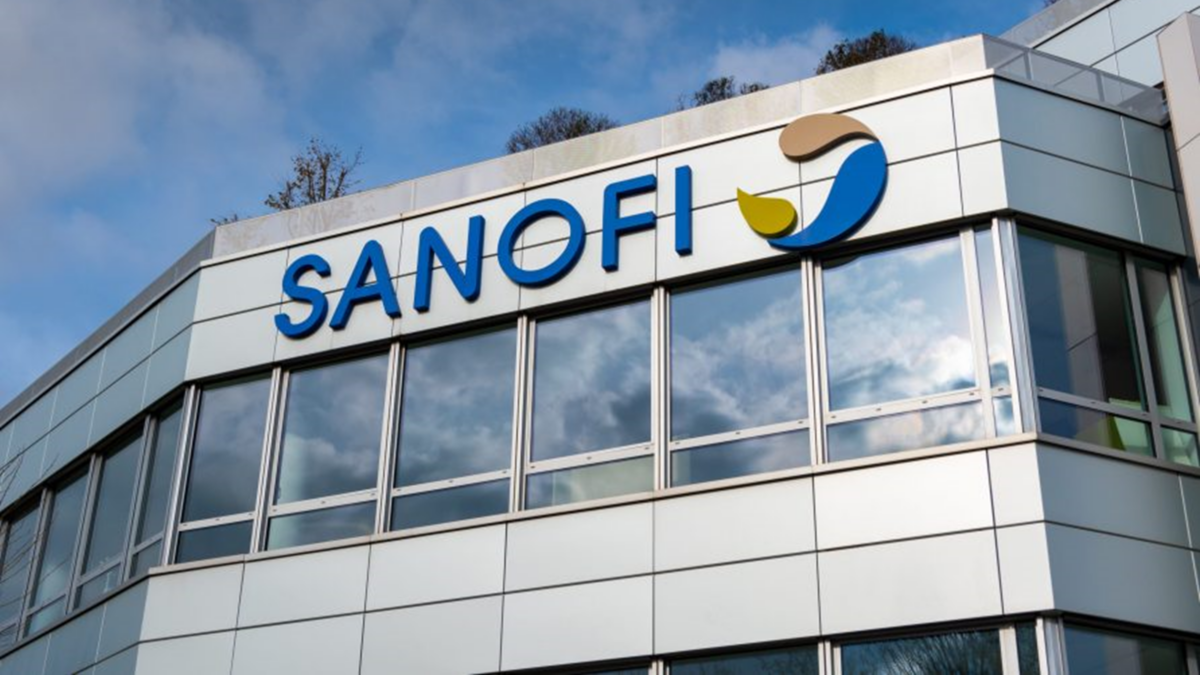
9) Sanofi
2022 Revenue: In 2022, Sanofi’s annual revenue was €43.00 billion ($45.21 billion USD), a 13.87 percent increase from €37.76 billion ($44.63 billion USD) in 2021.
2022 Net Income: Sanofi’s annual net income in 2022 was €8.37 billion ($8.80 billion USD), a 34.52 percent increase from €6.22 billion ($7.36 billion USD) in 2021.
2022 R&D Spend: In 2022, Sanofi spent €6.71 billion ($7.05 billion USD) on R&D, a 17.81 percent increase from the €5.69 billion ($6.73 billion USD) Sanofi spent on R&D in 2021.
In 2022, Sanofi implemented a “Play to Win” strategy, which entailed big decisions and action to support the competitive margins required for the company to succeed. Their annual report outlines four major priorities: focus on growth, lead with innovation, accelerate efficiency and reinvent how they work.
Sanofi’s global sales in 2022 were a total of €43 billion — a 7 percent growth from the last year, largely due to the key growth driver Dupixent (dupilumab), as well as their vaccine sales. Dupixent alone generated €8.29 billion ($8.72 billion USD) in sales in 2022, a 43.8 percent increase from 2021. Dupixent has been approved for new indications in the past few years, such as for the treatment of prurigo nodularis, eosinophilic esophagitis and asthma, which have contributed to sales. It is expected that Dupixent sales will reach €10 billion by 2023.
In terms of other significant operations, Sanofi launched collaborations with several partners in 2022. With Blackstone Life Sciences, up to €300 million (around $315 million USD) will be invested to accelerate pivotal studies and clinical development programs for formulating the subcutaneous delivery of the anti-CD38 antibody Sarclisa (isatuximab) for the treatment of multiple myeloma. In partnership with Seagen, Sanofi will design, develop and commercialize ADCs for three cancer targets using Sanofi’s proprietary monoclonal antibody technology and Seagen’s proprietary ADC technology.
Some business losses include the pause of patient enrollment in a Phase III tolebrutinib trial by the FDA due to some potential side effects from the treatment, as well as the cessation of the global clinical development program of amcenestrant for breast cancer in August 2022.
Sanofi’s Top 5 Best-Selling Drugs of 2022:
1) Dupixent (dupilumab)
Dupixent is a monoclonal antibody that blocks IL-4 and IL-13, key causes of allergic diseases. Blocking these interleukins reduces the inflammatory response in the body. It is indicated for eczema, severe asthma, eosinophilic esophagitis and prurigo nodularis. Dupixent was first approved by the FDA in March 2017. The list price of Dupixent was reported to be $3,587.92 per carton, according to the manufacturer. The average cost of a 30-day supply of Dupixent is around $5,298 (without insurance). Sanofi’s total global revenue from Dupixent was €8.29 billion ($8.72 billion USD) in 2022.
2) Lantus (insulin glargine)
Lantus is a modified form or analog of insulin known as insulin glargine, which is longer acting than regular insulin and is indicated to improve glycemic control in adults and children with type 1 or type 2 diabetes. It was approved by the FDA for this use over 20 years ago in April 2000. In 2022, Lantus generated Sanofi €2.26 billion ($2.38 billion USD) in global sales. The list price of Lantus is around $292.07 for a 10 ml vial and $438.07 for the pre-filled pens, and Sanofi said it will cut US list prices of Lantus by 78 percent starting next year.
3) Aubagio (teriflunomide)
Aubagio is a once-daily pill indicated for the management of relapsing forms of multiple sclerosis. This drug is teriflunomide, an immunomodulator with anti-inflammatory properties. The mechanism of action may involve reducing the number of activated lymphocytes in the central nervous system that cause multiple sclerosis. Aubagio generated Sanofi €2.03 billion ($2.14 billion USD) globally in 2022, and the list price for a 30-day supply of Aubagio was reported to be $9,029.72, according to the manufacturer. Aubagio was approved by the FDA in September 2012.
4) Lovenox (enoxaparin sodium)
Lovenox is enoxaparin sodium, an anticoagulant medication. It is part of the class of anticoagulants called low molecular weight heparin (which has longer lasting effects). It is indicated for the treatment and prevention of deep vein thrombosis and pulmonary embolism, including during pregnancy and following some surgeries. This medication was first approved by the FDA in December 1998. The monthly price of Lovenox without insurance can range from around $320 to $1450, depending on the strength. Sanofi’s total global revenue from Lovenox in 2022 was €1.31 billion ($1.38 billion USD).
5) Toujeo (insulin glargine)
Toujeo is very similar to Lantus in that both are insulin glargine, except Toujeo is more concentrated. It is also a long-lasting insulin analog indicated to improve glycemic control in adults and children with diabetes. It was first approved in February 2015. Toujeo is available as a Toujeo Solostar or Toujeo Max SoloStar pen. A Toujeo Solostar pen can cost around $575.05 without insurance. Toujeo generated Sanofi €1.12 billion ($1.17 billion USD) in revenue in 2022.
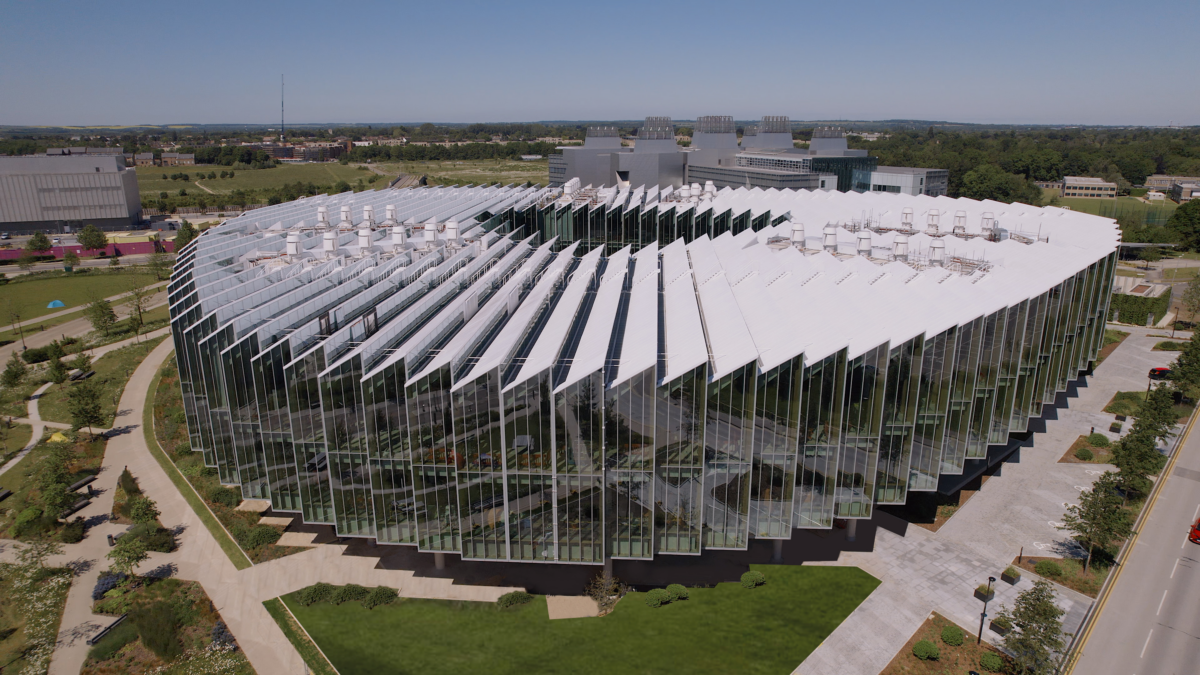
10) AstraZeneca
2022 Revenue: In 2022, AstraZeneca brought in $44.35 billion in revenue, an 18.53 percent increase from $37.42 billion in 2021.
2022 Net Income: AstraZeneca had a net income of $3.29 billion, a 2,763 percent increase from $115 million in 2021.
2022 R&D Spend: AstraZeneca spent $9.76 billion on R&D in 2022, a 0.27 percent increase from the $9.74 billion the company spent on R&D in 2021.
In 2022, AstraZeneca demonstrated strong company performance, according to their annual report. There was a record 34 approvals in major markets, and late-stage trials are commencing for medications including camizestrant, datopotamab deruxtecan and volrustomig. Additional revenue came from the acquisition of Alexion Pharmaceuticals in July 2021. In December 2022, AstraZeneca also sold its R&D facility in Waltham, Massachusetts.
The majority of AstraZeneca’s growth came from Farxiga (dapagliflozin), a SGLT2 inhibitor indicated for heart failure and kidney disease; its total revenue grew by 46.03 percent from 2021 to $4.38 billion in 2022. Imfinzi (durvalumab, a PD-L1 inhibitor) and Calquence (acalabrutinib, a BTK inhibitor) saw double-digit sales growth too.
Some of the key regulatory approvals for the company include the FDA approval for Airsupra (albuterol/budesonide) for asthma and Imjudo (tremelimumab) was also approved by the FDA for unresectable liver cancer. The company received five approvals in Europe including Enhertu (trastuzumab-deruxtecan) for gastric cancer and breast cancer, Imfinzi (durvalumab) for biliary tract cancer and Forxiga (dapagliflozin) for heart failure. Five approvals were granted in Japan too, for Imfinzi and Imjudo in liver cancer and Calquence for treatment-naïve CLL.
Additional regulatory milestones include US Fast Track designation for several drugs, including capivasertib for HR+, HER2- breast cancer and tozorakimab for treatment and prevention of acute respiratory failure in patients with viral lung infection. US Orphan Drug designation was given to Saphnelo (anifrolumab), a treatment for idiopathic inflammatory myopathies.
Going forward, the company will initiate more than 30 Phase III trials in 2023, ten of which have the potential to deliver sales over $1 billion. The revenue increases this year as well as success in R&D demonstrates that the company is on track to deliver leading revenue growth beyond 2025 and deliver at least 15 new medications by the end of the decade.
AstraZeneca’s Top 5 Best-Selling Drugs of 2022:
1) Tagrisso (osimertinib)
Tagrisso is indicated for the treatment of adults with non-small cell lung cancers that have abnormal epidermal growth factor receptors. It is an epidermal growth factor receptor tyrosine kinase inhibitor that blocks the growth of advanced cancer. In 2022, AstraZeneca’s total global revenue from Tagrisso was $5.44 billion. Tagrisso costs about $17,000 for a supply of 30 tablets (without insurance). Tagrisso was first granted FDA accelerated approval in November 2015.
2) Farxiga (dapagliflozin)
Farxiga is indicated for several conditions, including improving blood sugar control in type 2 diabetics, reducing the risk of hospitalization for heart failure, reducing the risk of cardiovascular death in adults with symptomatic heart failure and slowing the progression of kidney disease. This diabetes medication functions by helping the kidneys rid of excessive glucose from the bloodstream. Farxiga was first approved by the FDA in January 2014. The list price of Farxiga was reported to be $548.83 for a 30-day supply, according to the manufacturer. AstraZeneca’s total revenue generated by Farxiga in 2022 was $4.38 billion.
3) Soliris (eculizumab)
Soliris is a monoclonal antibody that works by inhibiting the complement system, which is part of the body’s immune system. Soliris was first approved by the FDA in March 2007 for the treatment of paroxysmal nocturnal hemoglobinuria (PNH), a rare, life-threatening blood disorder. PNH causes red blood cells to break down prematurely, leading to anemia, blood clots and other complications. By inhibiting the complement system, Soliris can reduce the breakdown of red blood cells in individuals with PNH. AstraZeneca’s total revenue from sales of Soliris was $3.76 billion in 2022. The annual cost of treatment with Soliris is around $678,392.
4) Imfinzi (durvalumab)
In 2022, Imfinzi brought in AstraZeneca $2.78 billion in revenue. This monoclonal antibody is used for the treatment of patients with unresectable liver cancer, bile duct cancer and gallbladder cancer. It works by blocking the interaction of the programmed cell death ligand 1 with the PD-1 as a checkpoint inhibitor. Imfinzi was first approved by the FDA in May 2017 and the average wholesale acquisition cost of Imfinzi was reported to be $15,000 per month, according to the manufacturer.
5) Lynparza (Olaparib)
Lynparza is a PARP inhibitor, meaning it inhibits poly ADP ribose polymerase (PARP), an enzyme involved in DNA repair. This stops the PARP from repairing any cancer cells, causing the cells to die. The drug is indicated for the treatment of metastatic HER2- breast cancer with inherited BRCA1 or 2 mutations, ovarian cancer and fallopian tube cancer, among others. It was first approved in December 2014, and AstraZeneca’s total global revenue from Lynparza in 2022 was $2.64 billion. Lynparza costs about $13,886 per month (without insurance).
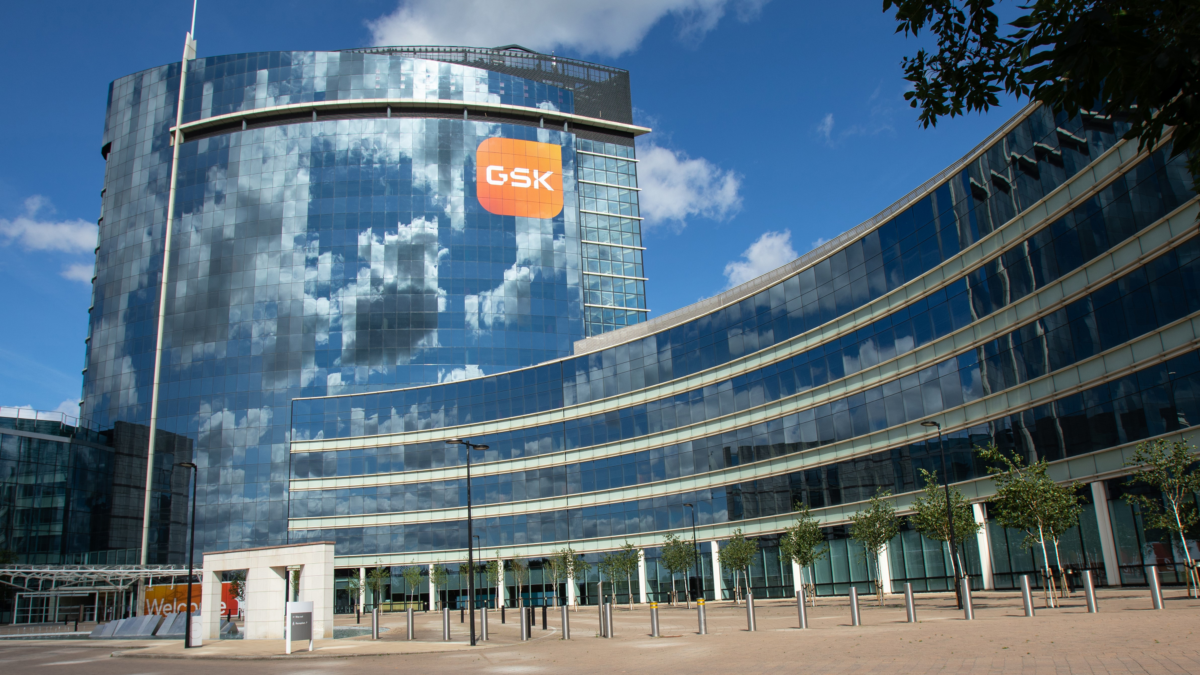
11) GSK
2022 Revenue: In 2022, GlaxoSmithKline had an annual revenue of £29.32 billion ($36.16 billion USD), an 18.74 percent increase from £24.70 billion ($33.97 billion USD) in 2021.
2022 Adjusted Operating Profit: GlaxoSmithKline had an adjusted operating profit of £8.15 billion ($10.05 billion USD) in 2022, a 25.54 percent increase from £6.49 billion ($8.93 billion USD) in 2021.
2022 R&D Spend: In 2022, GlaxoSmithKline spent £5.49 billion ($6.77 billion USD) on R&D, a 9.34 percent increase from the £5.02 billion ($6.90 billion USD) GlaxoSmithKline spent on R&D in 2021.
GlaxoSmithKline plc (GSK) is a pharma and biotech firm with headquarters in the UK and a focus on respiratory diseases and HIV treatments. The company’s robust growth in vaccines and specialty medicines contributes to approximately two-thirds of its total sales, leading to an upward trend in sales and operating profit forecasts. GSK’s growth is expected to surpass 5 percent for sales and 10 percent for operating profits through 2026.
In recent years, GSK has seen significant achievements, with over 20 new medicines and vaccines approved. Notably, the company had exceptional Phase III results for a respiratory syncytial virus (RSV) vaccine candidate and received FDA approval for a long-lasting HIV treatment in 2022.
GSK has consistently grown through strategic acquisitions and partnerships. The acquisition of Boston-based vaccine company, Affinivax, enabled GSK to harness the innovative MAPS technology and expedite its vaccine development process. In addition to Affinivax, GSK acquired Sierra Oncology to enhance its myelofibrosis treatment offerings and is hopefully awaiting FDA approval for momelotinib in 2023. An exclusive license agreement was also signed with Spero Therapeutics for the development of tebipenem, a novel oral antibiotic designed to treat complicated urinary tract infections (UTIs). These strategic moves have contributed to GSK’s outstanding operational and financial performance to date.
GSK’s Top 5 Best-Selling Drugs of 2022:
1) Shingrix (zoster vaccine recombinant, adjuvanted)
Shingrix, with 2022 sales of £2.96 billion ($3.65 billion USD), became the first shingles vaccine to receive FDA approval in 2017. It specifically targets the painful and potentially serious illness of shingles. Clinical trials have shown that the vaccine is 90 percent effective in preventing shingles for individuals aged 50 and over. The list price of Shingrix, a two-dose shingles vaccine regimen, was reported to be $366.82 (or $183.41 per dose), according to the manufacturer.
2) Xevudy (sotrovimab)
Xevudy, a monoclonal antibody treatment for SARS-CoV-2, generated £2.31 billion ($2.85 billion USD) in sales in 2022. It is designed to prevent COVID-19 in adults and adolescents by inhibiting the virus from entering and infecting healthy cells. The FDA granted Xevudy Emergency Use Authorization during the pandemic. The wholesale acquisition cost of Xevudy is around $2,100.
3) Triumeq (abacavir/dolutegravir/lamivudine)
Triumeq, which earned £1.80 billion ($2.22 billion USD) in sales in 2022, was approved by the FDA in August 2014. It is used to treat HIV infections in adults and adolescents aged 12 years and older who weigh at least 40 kg, by preventing the virus from replicating and infecting further cells. The cost of a 90-tablet supply of Triumeq PD oral tablets, dispersible (60 mg-5 mg-30 mg) is approximately $1,127.
4) Trelegy Ellipta (fluticasone/umeclidinium/vilanterol)
Trelegy Ellipta, with 2022 sales of £1.73 billion ($2.14 billion USD), is a combination of an inhaled corticosteroid (ICS), long-acting muscarinic antagonist (LAMA) and a long-acting beta2-adrenergic agonist (LABA) used for treating chronic obstructive pulmonary disease (COPD) or asthma. Approved by the FDA in 2020, it is the first once-daily single inhaler triple therapy for both asthma and COPD in the US. The list price for a monthly supply of Trelegy was reported to be $638.52, according to the manufacturer.
5) Nucala (mepolizumab)
Nucala, which recorded £1.42 billion ($1.76 million USD) in sales in 2022, is a monoclonal antibody used for the maintenance treatment of severe eosinophilic asthma in patients aged six years and older. The FDA first approved Nucala in 2015 as GSK’s first-in-class medication that targets interleukin-5 (IL-5) for the treatment of severe asthma in patients aged 12 years and older and with an eosinophilic phenotype. The list price of a single dose of Nucala for self-injection was reported to be $3,581.39, according to the manufacturer.
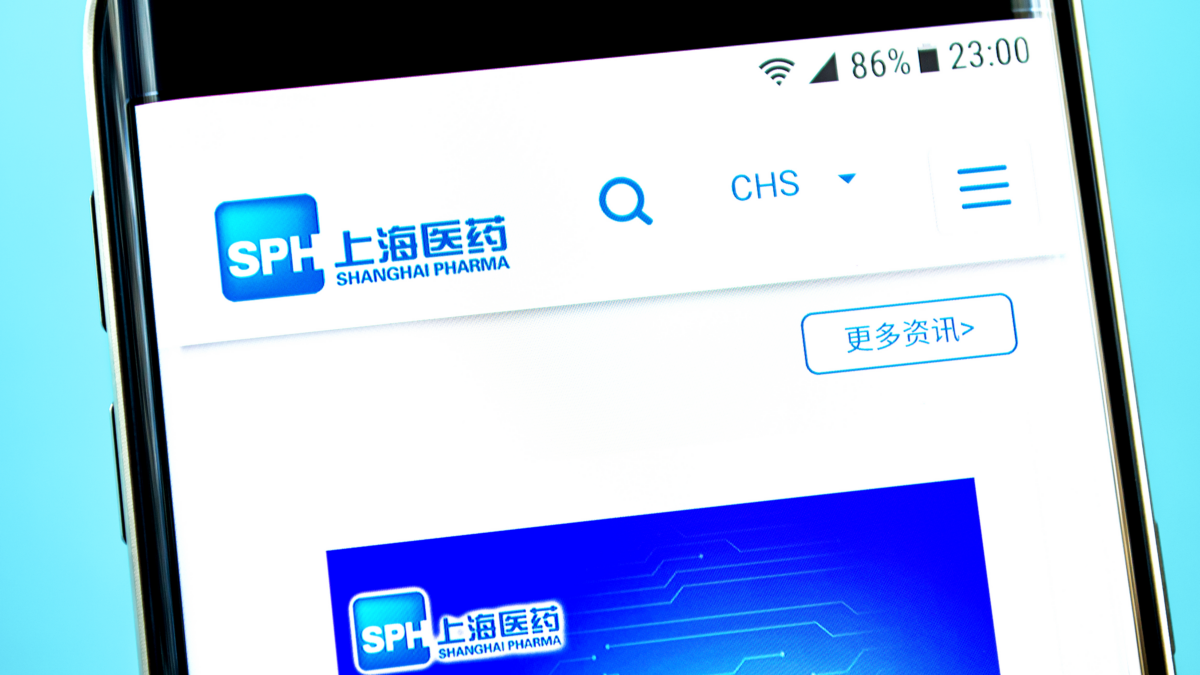 12) Shanghai Pharmaceuticals
12) Shanghai Pharmaceuticals
2022 Revenue: Shanghai Pharmaceuticals had a revenue of 231.98 billion RMB ($34.47 billion USD) in 2022, a 7.49 percent increase from 215.82 billion RMB ($33.46 billion USD) in 2021.
2022 Profit: In 2022, Shanghai Pharmaceuticals had a profit of 6.99 billion RMB ($1.04 billion USD), a 11.43 percent increase from 6.27 billion RMB ($0.97 billion USD) in 2021.
2022 R&D Spend: Shanghai Pharmaceuticals spent 2.11 billion RMB ($313.89 million USD) on R&D in 2022, a 6.29 percent increase from the 1.99 billion RMB ($308.07 million USD) the company spent on R&D in 2021.
Shanghai Pharmaceuticals, a leading Chinese pharmaceutical company, excels in the research, development, manufacturing, distribution and retail of pharmaceutical products. Its achievements include the successful operation of a GMP-certified COVID-19 vaccine plant with an annual capacity of 200 million doses, the establishment of a rare disease innovation platform, record-high R&D investment and a strong track record of converting R&D accomplishments.
The company set a new benchmark for R&D investment, allocating approximately 2.80 billion RMB ($416 million USD), an 11.87 percent annual increase from the previous year. This robust investment is fueling the expansion of their new drug pipeline, with 47 new drugs currently in the clinical study phase. Of these, six candidates are in pivotal studies or Phase III.
To expedite the development of new preparation and raw material synthesis technologies, the company has forged collaborative partnerships with various universities, R&D institutions and enterprises. Its product pipeline spans a broad spectrum of fields, including respiratory, cardiovascular, psychoneural, analgesic, anti-infective, digestive and metabolic areas.
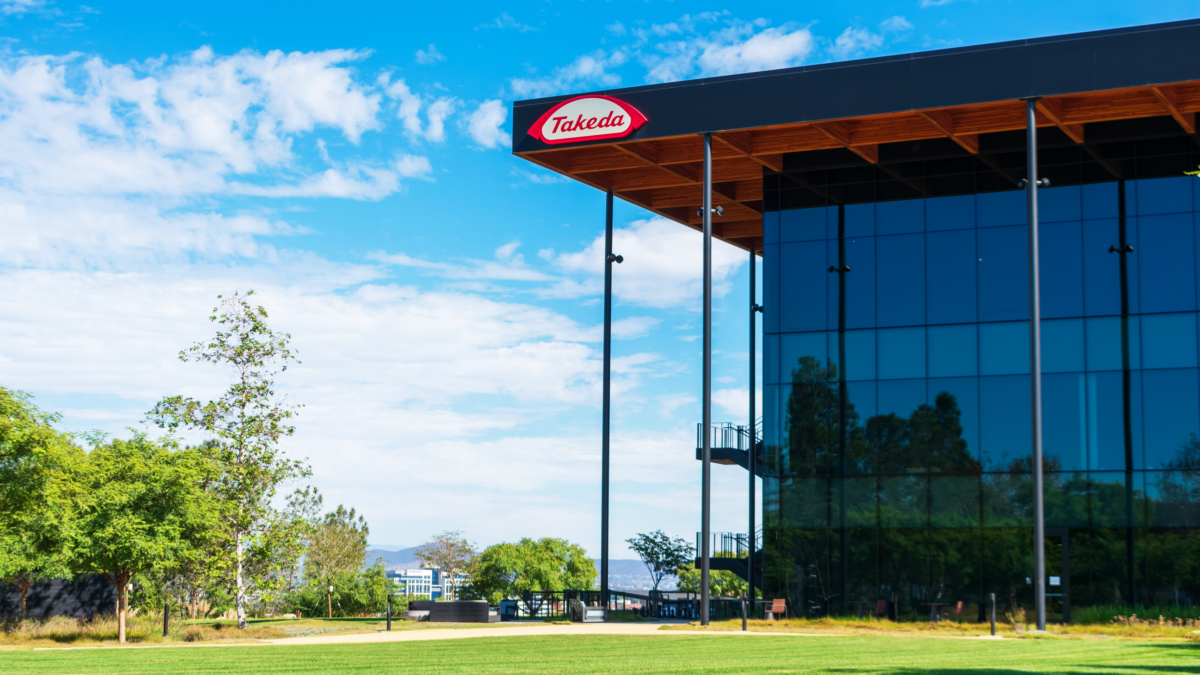
13) Takeda Pharmaceutical
2022 Revenue: In 2022, Takeda had an annual revenue of 4.03 trillion JPY ($30.64 billion USD), a 12.85 percent increase from 3.57 trillion JPY ($32.49 billion USD) in 2021.
2022 Net Profit: Takeda had a net profit of 317.0 billion JPY ($2.41 billion USD) in 2022, a 37.71 percent increase from 230.2 billion JPY ($2.10 billion USD) in 2021.
2022 R&D Spend: In 2022, Takeda spent 633.33 billion JPY ($4.82 billion USD) on R&D, a 20.38 percent increase from the 526.09 billion JPY ($4.79 billion USD) that Takeda spent on R&D in 2021.
Takeda Pharmaceutical, a global biopharmaceutical company headquartered in Tokyo, is committed to R&D aimed at creating innovative and transformative medicines. The company primarily focuses on four core therapeutic areas: oncology, rare diseases, immunology and gastroenterology (GI).
Takeda Pharmaceutical is ramping up its R&D investment in its Innovative Biopharma, Plasma-Derived Therapies (PDT) and Vaccines divisions. It operates eight premier plasma manufacturing facilities that supply 20 plasma medicines to patients across more than 80 countries. The company’s robust AI-driven capabilities facilitate the secure collection and efficient analysis of real-world data from plasma donor centers, leading to increased plasma donation volumes. With approximately 40 medicines in clinical-stage development, Takeda anticipates sustained business growth in the long term.
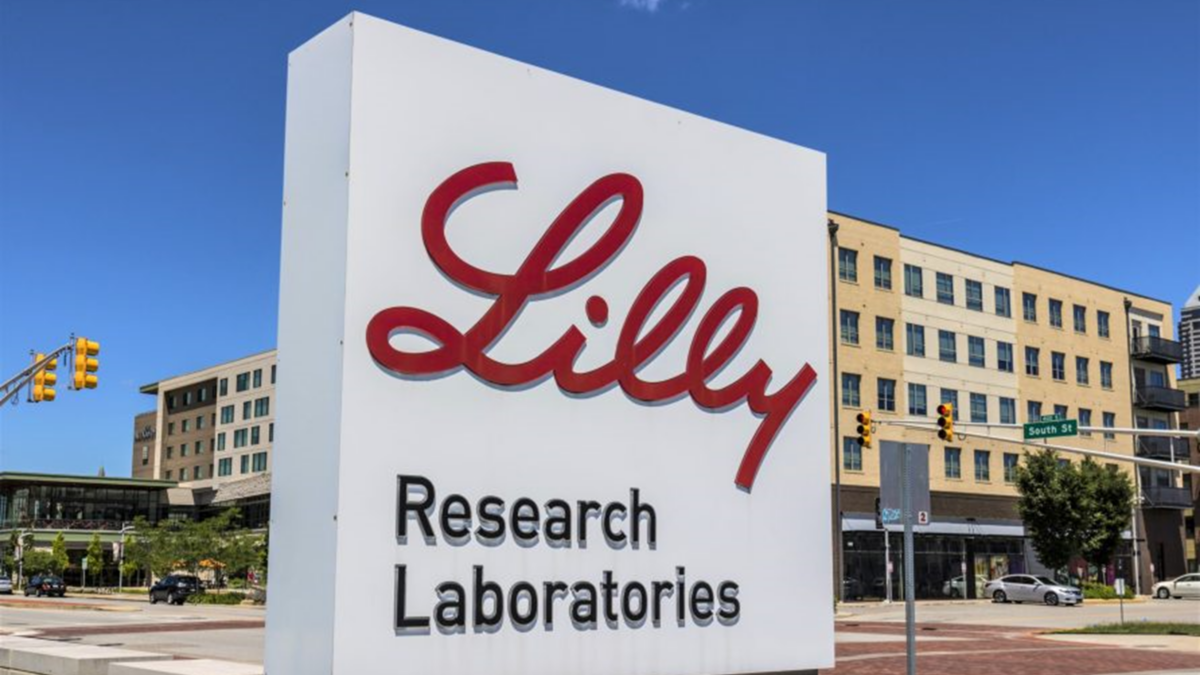
14) Eli Lilly & Co
2022 Revenue: In 2022, Eli Lilly made $28.54 billion in revenue, a 0.79 percent increase from $28.32 billion in 2021.
2022 Net Income: Eli Lilly had a net income of $6.24 billion in 2022, a 11.88 percent increase from $5.58 billion in 2021.
2022 R&D Spend: In 2022, Eli Lilly spent $7.19 billion on R&D, which was a 3.75 percent increase from the $6.93 billion the company spent on R&D in 2021.
The majority of Eli Lilly’s growth is attributable to the company’s key products, including Verzenio (abemaciclib), Mounjaro (tirzepatide), Jardiance (empagliflozin), Taltz (ixekizumab), Trulicity (dulaglutide), Retevmo (selpercatinib), Emgality (galcanezumab), Cyramza (ramucirumab), Tyvyt (sintilimab) and Olumiant (baricitinib). The company’s growth is also largely due to its investments in new products and indications, as well as its robust late-stage pipeline.
Notably, the recent release of transformative medicines such as Jaypirca (pirtobrutinib), an FDA-approved non-covalent BTK inhibitor for mantle cell lymphoma, and the promising Phase III study results of Jardiance, which showed significant kidney and cardiovascular benefits in adults with chronic kidney disease, have contributed to this growth.
Eli Lilly’s enduring success is largely due to its consistent investment in R&D and the commercialization of innovative new medicines. At present, the company has approximately 45 new drugs in Phase II or Phase III clinical trials, or awaiting approval from regulatory authorities in the US, Europe or Japan. These drugs span a variety of medical conditions, including diabetes, immunology, neuroscience and oncology.
Through extensive global collaboration, Eli Lilly & Co continues to expedite its R&D, marketing, manufacturing and distribution efforts. For example, the company has formed a partnership with Boehringer Ingelheim to develop diabetes treatment products such as Jardiance, Glyxambi (empagliflozin/linagliptin), Synjardy (empagliflozin/metformin), Trijardy XR (empagliflozin/linagliptin/metformin hydrochloride), Trajenta (linagliptin), Basaglar (insulin glargine) and Jentadueto (linagliptin/metformin hydrochloride).
Eli Lilly’s Top 5 Best-Selling Drugs of 2022:
1) Trulicity (dulaglutide)
Trulicity, which generated worldwide revenue of $7.44 billion in 2022, exhibited a 15 percent increase in sales compared to 2021. Approved by the FDA in 2014, Trulicity is one of the company’s treatment options for adults with type 2 diabetes. As a glucagon-like peptide-1 (GLP-1) receptor agonist, Trulicity mimics a natural hormone to enhance glycemic control. The list price of Trulicity was reported to be $930.88 per month, according to the manufacturer.
2) Verzenio (abemaciclib)
Verzenio saw an 84 percent revenue increase to $2.48 billion in 2022. Approved by the FDA in 2017, Verzenio is the first CDK4/6 inhibitor approved in combination with fulvestrant for treating women with HR+, HER2- breast cancer. The list price of Verzenio was reported to be $14,533.68 per month, according to the manufacturer.
3) Taltz (ixekizumab)
Taltz, first approved by the FDA in 2016, is a humanized interleukin-17A antagonist used for treating moderate to severe plaque psoriasis. It recorded sales of $2.48 billion in 2022, reflecting a 12 percent annual increase. The list price of Taltz was reported to be $6,586.40 per individual pen, according to the manufacturer.
4) Jardiance (empagliflozin)
Jardiance, first cleared by the FDA in 2014, is a sodium-glucose cotransporter-2 (SGLT2) inhibitor used for treating type 2 diabetes. The company’s worldwide revenue from Jardiance in 2022 was $2.07 billion, a 39 percent increase compared to 2021. In 2022, the FDA further approved Jardiance to reduce the risk of cardiovascular death and hospitalization for heart failure in adults. The list price for a monthly supply of Jardiance was reported to be $570.48, according to the manufacturer.
5) Humalog (insulin lispro)
Humalog, a rapid-acting human insulin analog, is used for glycemic control in adults and children with diabetes mellitus. The company’s worldwide Humalog revenue for 2022 was $2.06 billion, a 16 percent decrease compared to 2021. The list price for a 5-pack of 3 mL Humalog U-100 KwikPens, which totals 15 mL or 1,500 units, was reported to be $530.40, according to the manufacturer. Meanwhile, the list price for a 10 mL vial of Humalog U-100, equivalent to 1,000 units, was reported to be $274.70. In 2023, Eli Lilly announced a price reduction of Humalog by 70 percent, effective starting the fourth quarter of 2023.
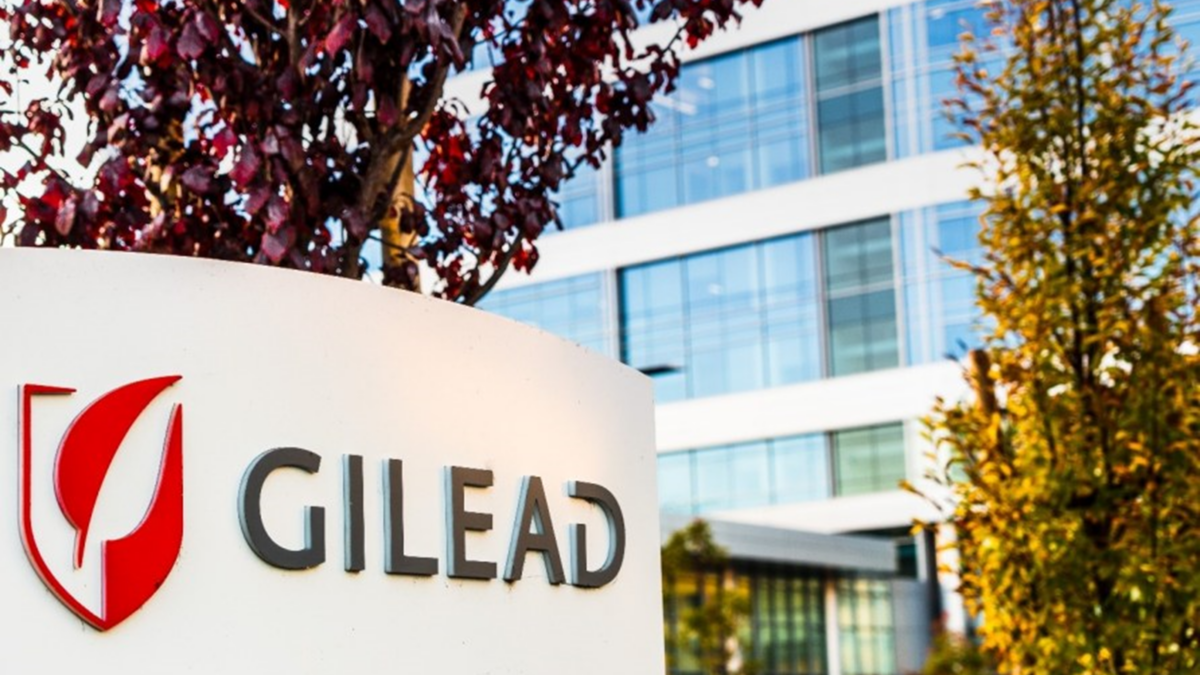
15) Gilead Sciences
2022 Revenue: In 2022, Gilead Sciences had a total revenue of $27.28 billion, a 0.09 percent decrease from $27.31 billion in 2021.
2022 Net Income: Gilead Sciences had a net income of $4.59 billion in 2022, a 26.23 percent decrease from $6.23 billion in 2021.
2022 R&D Spend: In 2022, Gilead Sciences spent $4.98 billion on R&D, a 8.17 percent increase from the $4.60 billion the company spent on R&D in 2021.
Gilead Sciences, a biopharmaceutical company based in California, primarily focuses on the R&D of treatments for HIV/AIDS, hepatitis B and C, influenza and COVID-19. In the fourth quarter of 2022, the company’s revenue rose by 2 percent to $7.4 billion compared to the previous year. This increase was fueled by sales in Oncology, HIV and Hepatitis C virus sectors, although it was partially offset by a decrease in Veklury (remdesivir) sales.
The year 2022 marked a significant period for Gilead Sciences as it expanded its product portfolio to encompass a broader range of medical conditions. The FDA approved a new biannual treatment for HIV, Sunlenca (lenacapavir), which is effective for patients with multidrug resistance. Furthermore, Biktarvy (bictegravir 50 mg /emtricitabine 200 mg /tenofovir alafenamide 25 mg tablets), another HIV medication, demonstrated promising results in Phase III trials and received authorization from the European Commission as a new low-dose treatment option.
Gilead Sciences has been heavily investing in R&D, as well as global partnerships, to expand its product range. The company’s offerings now include treatments for hepatitis B and C, COVID-19, cancer and inflammation management. The recent acquisition of UK-based biotechnology company MiroBio enables Gilead Sciences to utilize MiroBio’s I-ReSToRE platform to expedite the development of antibodies targeting immune inhibitory receptors for inflammation treatment. This acquisition also signifies the establishment of the company’s first research center outside the US.
Gilead Sciences’ Top 5 Best-Selling Drugs of 2022:
1) Biktarvy (bictegravir/emtricitabine/tenofovir alafenamide)
Approved by the FDA in 2018, Biktarvy is a three-drug combination containing bictegravir (BIC), emtricitabine (FTC) and tenofovir alafenamide (TAF). It is used to treat HIV-1 infection. In 2022, Biktarvy generated $10.39 billion in revenue. The list price of Biktarvy was reported to be $3,795 per month, according to the manufacturer.
2) Veklury (remdesivir)
Veklury, approved by the FDA in 2020, is a SARS-CoV-2 nucleotide analog RNA polymerase inhibitor designed for the treatment of COVID-19. Veklury generated a revenue of $3.91 billion in 2022. The list price of Veklury was reported to be $520 per vial in the US and the price of a five-day treatment course of Veklury was reported to be $2,340 in developed countries, according to the manufacturer.
3) Genvoya (elvitegravir/cobicistat/emtricitabine/tenofovir alafenamide)
The FDA granted approval to Genvoya in 2015 as a comprehensive treatment for HIV-1 infection. This approval applies to adults and pediatric patients aged 12 and above who have not previously undergone antiretroviral treatment. Additionally, Genvoya can be used to substitute the existing antiretroviral regimen in patients who have maintained virological suppression for a minimum of six months on a stable antiretroviral regimen. Genvoya generated $2.40 billion in sales in 2022. The price of Genvoya is around $4,000 for a monthly supply.
4) Descovy (emtricitabine/tenofovir alafenamide)
Descovy, approved by the FDA in 2016, is indicated for the treatment of HIV-1 infection and pre-exposure prophylaxis (PrEP) to reduce the risk of HIV-1 infection. In 2022, Descovy generated $1.87 billion in sales. The list price of a monthly supply of Descovy was reported to be $2,159, according to the manufacturer.
5) Epclusa (sofosbuvir/velpatasvir)
Epclusa, the first single-tablet regimen for the treatment of hepatitis C virus (HCV) infection, was approved by the FDA in 2016. Its active components include sofosbuvir, an HCV nucleotide analog NS5B polymerase inhibitor, and velpatasvir, an HCV NS5A inhibitor. In 2022, Epclusa’s sales amounted to $1.53 billion. The list price of Epclusa was reported to be $24,920 per month, according to the manufacturer.
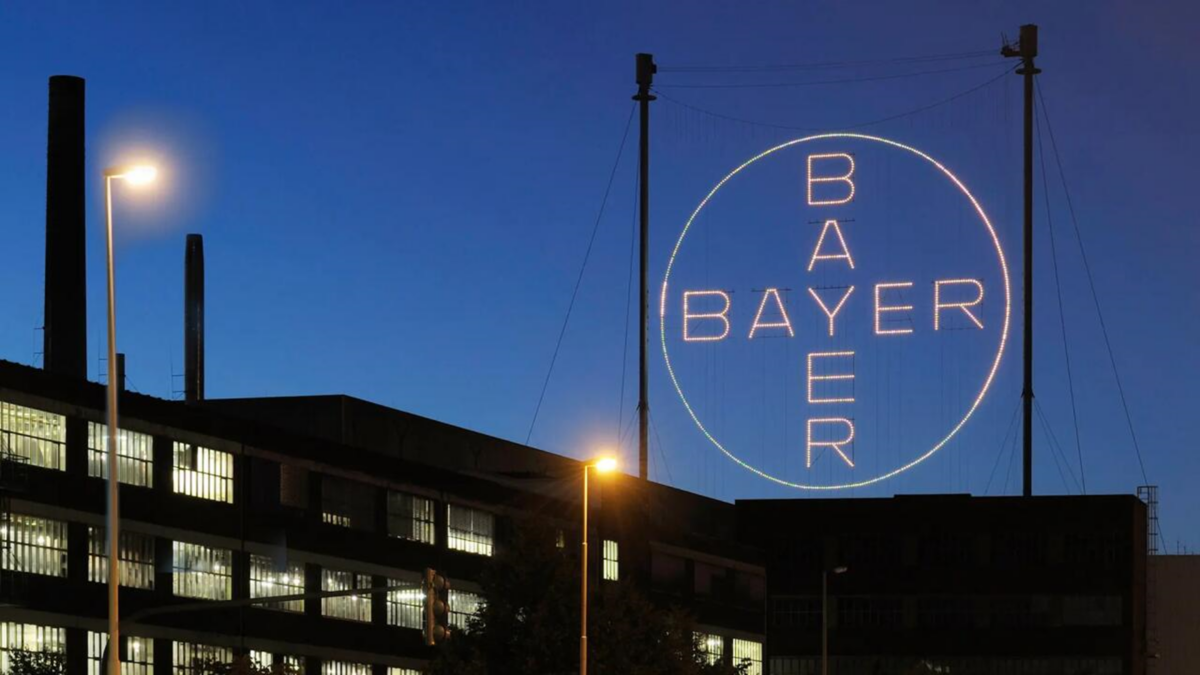
16) Bayer
2022 Revenue: Bayer had a revenue of €25.33 billion ($26.68 billion USD) in 2022 from its Pharmaceutical and Consumer Health divisions, a 7.15 percent increase from €23.64 billion ($27.97 billion USD) in 2021.
2022 Net Cash Provided by Operating Activities: In 2022, Bayer’s net cash provided by operating activities was €4.63 billion ($4.88 billion USD), a 2.45 percent increase from €4.52 billion ($5.35 billion USD) in 2021.
2022 R&D Spend: In 2022, Bayer spent €3.62 billion ($3.81 billion USD) on R&D in its Pharmaceutical and Consumer Health divisions, a 8.39 percent increase from €3.34 billion ($3.95 billion USD) in 2021.
Bayer, a German pharmaceutical and biotechnology company, is one of the largest pharmaceutical entities globally. By the end of 2022, Bayer had established a presence in 83 countries and consolidated 354 companies.
Bayer’s primary focus lies in prescription products, including cardiology and women’s healthcare, along with therapeutics in oncology, hematology and ophthalmology. It also has a significant presence in consumer health sectors such as dermatology, nutritionals and allergy.
In 2022, Bayer’s revenue in the Pharmaceutical and Consumer Health sectors reached $26.68 billion. This growth was propelled by the expansion of its development portfolio in cell and gene therapies, as well as advancements in late-stage pharmaceutical pipeline drugs like asundexian and elinzanetant.
Bayer’s acquisitions of US biotech companies BlueRock Therapeutics, Asklepios BioPharmaceutical and Vividion Therapeutics have expedited its research pipeline in cell and gene therapy and drug discovery. Additionally, Bayer has formed a partnership with Mammoth Biosciences to broaden its product portfolio with innovative gene-editing technology. The establishment of a new precision molecular oncology research center in the Boston-Cambridge area further underscores Bayer’s commitment to developing novel targeted cancer therapies.
Bayer’s Top 5 Best-Selling Products in 2022:
1) Xarelto (rivaroxaban)
Xarelto, approved by the FDA in 2011, is prescribed for the treatment of venous thromboembolic events and for the prevention of stroke and systemic embolism in patients with atrial fibrillation. As a non-vitamin K antagonist oral anticoagulant, Xarelto generated sales of €4.52 billion ($4.76 billion USD) in 2022. The cost of Xarelto 20 mg oral tablet is around $581 for 30 tablets.
2) Eylea (aflibercept)
Eylea, a recombinant fusion protein approved by the FDA in 2011, is designed to treat patients with neovascular (wet) age-related macular degeneration by inhibiting the binding and activation of cognate VEGF receptors. In 2022, Eylea generated €3.21 billion ($3.38 billion USD) in sales. The cost of Eylea is approximately $1,850 per intravitreal dose.
3) Mirena/Kyleena/Jaydess
Mirena, Kyleena and Jaydess are intrauterine delivery systems (IUDs) designed to provide long-lasting pregnancy prevention. These systems are similar but differ primarily in hormone dose and duration of use. In 2022, these products collectively generated €1.28 billion ($1.35 billion USD) in sales. According to Planned Parenthood, getting an IUD may cost anywhere between $0 to $1,300.
4) Kogenate/Kovaltry/Jivi
Jivi, Kovaltry and Kogenate are injectable treatments designed to replenish the clotting factor (Factor VIII or antihemophilic factor) that individuals with hemophilia A lack. Jivi, Kovaltry and Kogenate were first approved by the FDA in 2018, 2016 and 1993, respectively. These medicines collectively generated €847 million ($892 billion USD) in sales in 2022.
5) Adalat (nifedipine)
Adalat, first approved by the FDA in 1981, is a medication classified as a calcium channel blocker. It’s primarily used to manage high blood pressure and angina, which is chest pain induced by exercise or stress. By relaxing the blood vessels, nifedipine helps regulate blood pressure and decrease the frequency of angina episodes. In 2022, Adalat made €831 million ($875 million USD) in sales. The cost of Adalat CC, an extended-release oral tablet of 30 mg, is approximately $165 for a pack of 100 tablets.
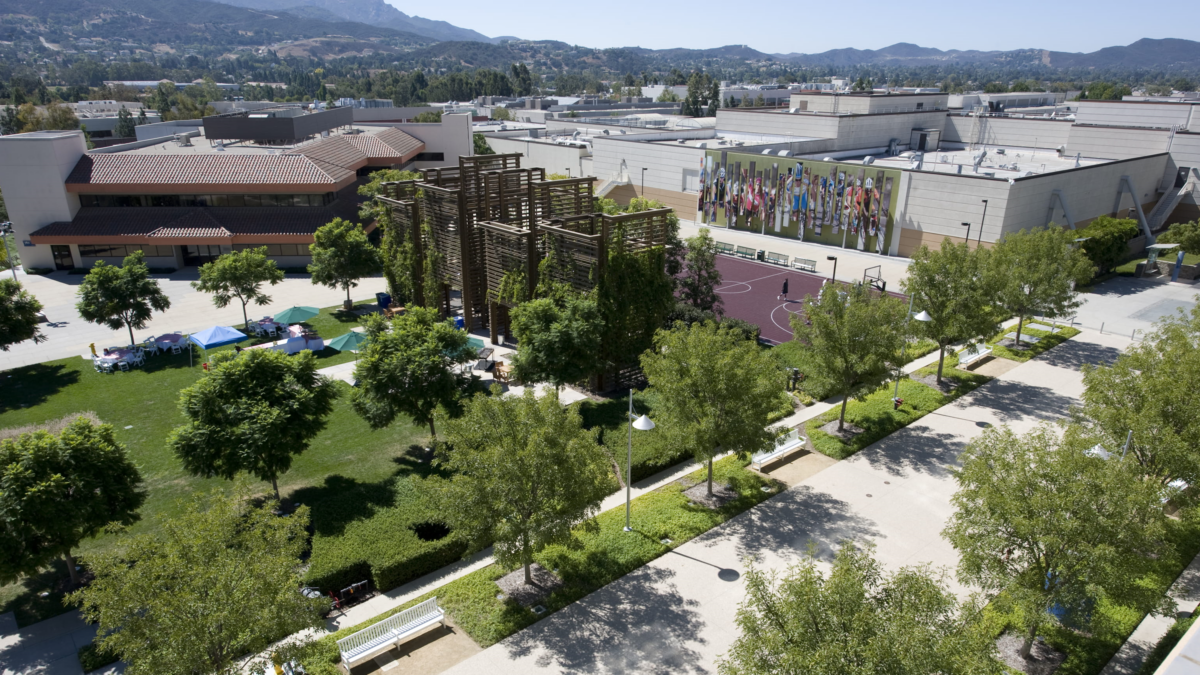
17) Amgen
2022 Revenue: In 2022, Amgen had a total revenue of $26.32 billion, a 1.32 percent increase from $25.98 billion in 2021.
2022 GAAP Net Income: Amgen had a GAAP net income of $6.55 billion in 2022, a 11.18 percent increase from $5.89 billion in 2021.
2022 R&D Spend: In 2022, Amgen spent $4.43 billion on R&D, a 7.99 percent decrease from the $4.82 billion the company spent on R&D in 2021.
Amgen, a biopharmaceutical company with headquarters in California, primarily focuses on the development of innovative medicines, pioneering research and advanced biomanufacturing. As a top-tier biotechnology firm, Amgen reported sales of $26.3 billion in 2022, largely fueled by the triumph of its novel treatments. These include the cholesterol drug Repatha (evolocumab), osteoporosis medication Evenity (romosozumab), and oncology and hematology products like Nplate (romiplostim), Blincyto (blinatumomab) and Kyprolis (carfilzomib).
The company declared a boost in its R&D investment to $4.4 billion in 2022. Amgen’s three drug candidates, namely olpasiran, tarlatamab and AMG133, have shown encouraging results in clinical trials.
In addition, the acquisition of ChemoCentryx enabled Amgen to broaden its product range with Tavneos, a treatment for antineutrophil cytoplasmic autoantibody (ANCA)-associated vasculitis, propelling the company towards its forthcoming milestone.
In 2022 alone, Amgen integrated 27 approved medicines into its product portfolio, of which 16 achieved record sales. The company’s latest innovative cancer treatments, Lumakras/Lumykras (sotorasib), contributed $285 million to the 2022 sales figures.
Amgen’s Top 5 Best-Selling Drugs of 2022:
1) Enbrel (etanercept)
Enbrel, a soluble tumor necrosis factor (TNF) blocker, was first approved by the FDA in 1998 for treating rheumatoid arthritis. It is now also FDA approved for treating juvenile idiopathic arthritis, psoriatic arthritis, ankylosing spondylitis and plaque psoriasis. In 2022, Enbrel contributed about $4.12 billion to Amgen’s sales. As a specialty drug, the list price of Enbrel was reported to be $1,762.34 per weekly 50 mg dose, according to the manufacturer.
2) Prolia (denosumab)
Ranked as Amgen’s second-highest grossing drug in 2022, Prolia brought in a revenue of $3.63 billion. The FDA first approved Prolia in 2010 as a prescription medication for treating osteoporosis. As a RANK ligand (RANKL) inhibitor, Prolia mitigates the risk of fractures by blocking the development of bone-removing cells within the body. The list price of Prolia was reported to be $1,624.54 per injection every six months, according to the manufacturer.
3) Otezla (apremilast)
Otezla, an oral small-molecule inhibitor of phosphodiesterase 4 (PDE4), received its first FDA approval in 2014 for treating plaque psoriasis. It was later FDA approved for treating active psoriatic arthritis. In 2022, Otezla recorded sales of approximately $2.29 billion. According to the manufacturer, the list price of Otezla was reported to be $4,600.48 for a monthly supply.
4) Xgeva (denosumab)
Xgeva was first approved by the FDA in 2010 for preventing skeletal-related events in patients with bone metastases from solid tumors. Xgeva was later approved by the FDA to treat giant cell tumor of the bone, for hypercalcemia of malignancy refractory to bisphosphonate therapy and for the prevention of skeletal-related events in patients with multiple myeloma. Xgeva, like Prolia, contains the active ingredient denosumab, but the intended use, dose and treatment interval differ. In 2022, Xgeva generated $2.01 billion in revenue. According to the manufacturer, the list price for a single dose of Xgeva was reported to be $2,988.24, and the recommended dosage schedule is once every four weeks.
5) Aranesp (darbepoetin alfa)
Aranesp was first approved by the FDA in 2001. It is prescribed for treating anemia resulting from chronic kidney disease in both dialysis and non-dialysis patients. Additionally, it is used for treating anemia caused by myelosuppressive chemotherapy, with the treatment plan including at least two more months of planned chemotherapy after the initiation of Aranesp. In 2022, Aranesp brought in $1.42 billion in sales. The cost of Aranesp injectable solution, with a concentration of 25 mcg/mL, is approximately $825 for a 4-milliliter supply.
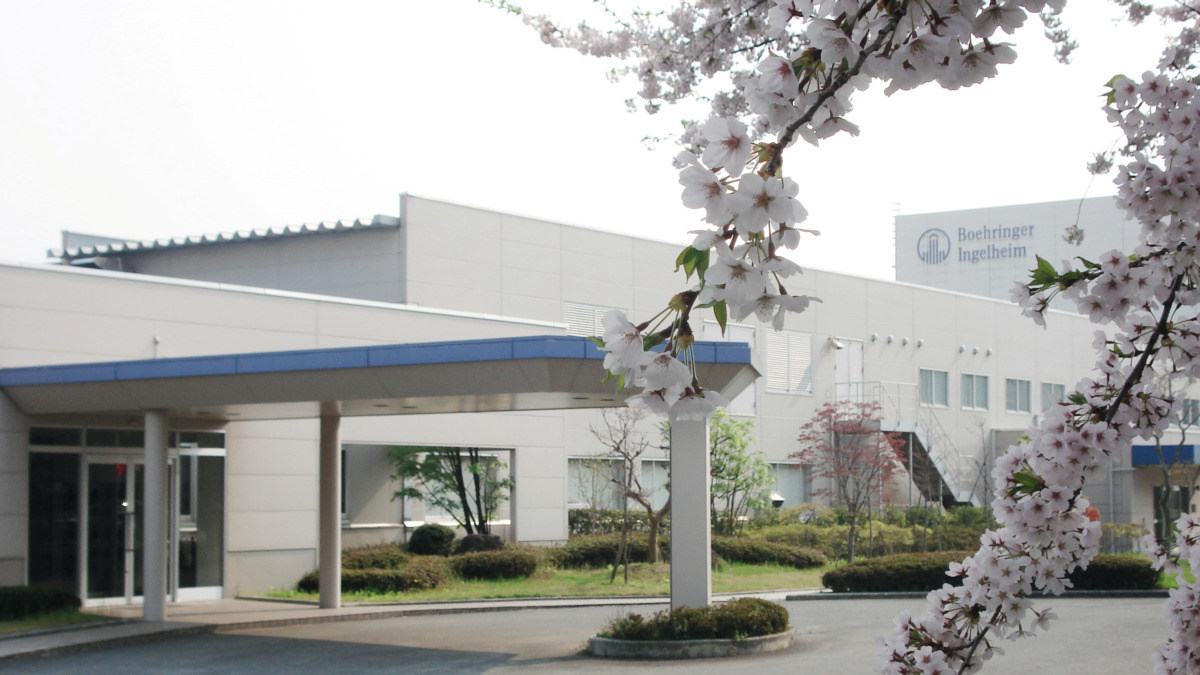
18) Boehringer Ingelheim
2022 Revenue: In 2022, Boehringer Ingelheim had a revenue of €24.15 billion ($25.44 billion USD), a 17.13 percent increase from €20.62 billion ($24.39 billion USD) in 2021.
2022 Net Income: Boehringer Ingelheim had a net income of €3.18 billion ($3.35 billion USD) in 2022, a 6.61 percent decrease from €3.41 billion ($4.03 billion USD) in 2021.
2022 R&D Spend: In 2022, Boehringer Ingelheim spent €5.05 billion ($5.32 billion USD) on R&D, a 22.29 percent increase from the €4.13 billion ($4.88 billion USD) the company spent on R&D in 2021.
Boehringer Ingelheim, a pharmaceutical entity headquartered in Ingelheim am Rhein, Germany, prioritizes research and treatment for respiratory diseases, metabolic disorders, immunology, oncology and central nervous system ailments.
The firm witnessed remarkable growth in 2022, thanks to numerous novel drug developments, including Spevigo (spesolimab) for pustular psoriasis, Jardiance (empagliflozin) for chronic heart failure and Ofev (nintedanib) for respiratory diseases. Boehringer Ingelheim demonstrates its commitment to innovating transformative therapies by investing around €5 billion in new medicine R&D in 2022, aimed at enhancing patient outcomes.
The year 2022 is shaping up to be a milestone for Boehringer Ingelheim, achieving FDA Breakthrough designation, three Fast Track designations and two Orphan Drug designations. At present, the company has over 50 novel medical products undergoing clinical trials and anticipates licensing 20 of these within the next seven years. By fostering global collaborations, Boehringer Ingelheim continues to bolster its capabilities in digital health, AI and data science, precision antibiotic therapy and anti-microbial resistance treatment.
Boehringer Ingelheim’s Top 5 Best-Selling Drugs in 2022:
1) Jardiance (empagliflozin)
First approved by the FDA in 2014, Jardiance is an SGLT2 inhibitor used to treat type 2 diabetes and chronic heart failure (HFrEF and HFpEF). In 2022, Jardiance amassed a revenue of €5.83 billion ($6.14 billion USD). The list price of Jardiance was reported to be $570.48 for a month’s supply, according to the manufacturer.
2) Ofev (nintedanib)
Ofev, a small molecule tyrosine kinase inhibitor (TKI) first approved by the FDA in 2014, is prescribed for treating idiopathic pulmonary fibrosis (IPF). Ofev accumulated a revenue of €3.23 billion ($3.40 billion USD) in 2022. The cost of a 60-capsule supply of Ofev oral capsules (100 mg each) is approximately $13,168.
3) Trajenta (linagliptin)/Jentadueto (linagliptin/metformin hydrochloride)
Trajenta, a dipeptidyl peptidase-4 (DPP-4) inhibitor approved by the FDA in 2011, is designed to lower blood sugar in adults with type 2 diabetes. Jentadueto, approved by the FDA in 2012, combines a DPP-4 inhibitor and biguanide for glycemic control in type 2 diabetes patients. Together, these two medications generated a total of €1.70 billion ($1.79 billion USD) in sales in 2022. The cost a 30-tablet supply of Tradjenta oral tablets, each containing 5 mg, is approximately $562. The cost of a 60-tablet supply of Jentadueto oral tablets, each containing 2.5 mg to 500 mg, is approximately $562.
4) Spiriva (tiotropium)
First approved by the FDA in 2004, Spiriva treats COPD and asthma by inhibiting M3-receptors in the smooth muscle, leading to bronchodilation. In 2022, Spiriva generated €1.56 billion ($1.64 billion USD) in revenue. The cost of 4 grams of Spiriva Respimat inhalation aerosol, with a concentration of 1.25 mcg/inh, is approximately $530.
5) Pradaxa (dabigatran etexilate)
Pradaxa, a thrombin inhibitor first approved by the FDA in 2010, is indicated to lower the risk of stroke and systemic embolism in patients with non-valvular atrial fibrillation. Despite a slight decrease in net sales in 2022, Pradaxa still generated €1.11 billion ($1.17 billion USD) in revenue and ranked as the company’s fifth best-selling drug. The cost of a 60-capsule supply of Pradaxa oral capsules, each containing 75 mg, is approximately $218.
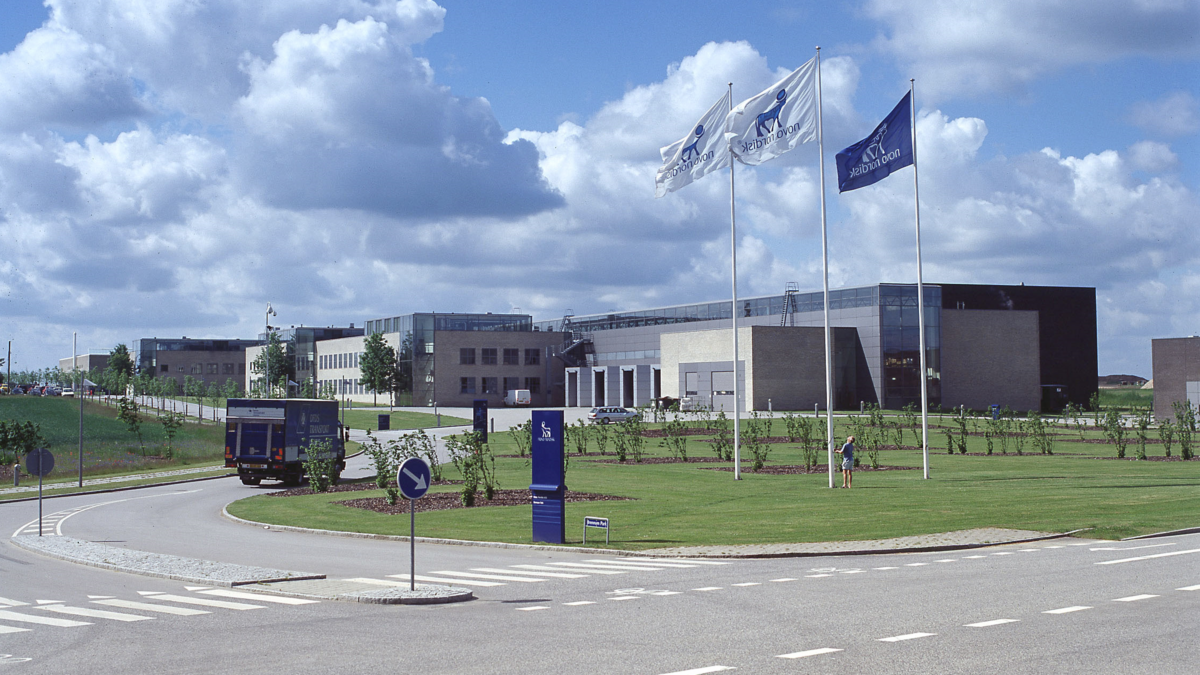
19) Novo Nordisk
2022 Revenue: Novo Nordisk had a revenue of 176.95 billion DKK ($25.00 billion USD) in 2022, a 25.68 percent increase from 140.80 billion DKK ($22.39 billion USD) in 2021.
2022 Net Profit: In 2022, Novo Nordisk had a net profit of 55.53 billion DKK ($7.84 billion USD), a 16.27 percent increase from 47.76 billion DKK ($7.59 billion USD) in 2021.
2022 R&D Spend: Novo Nordisk spent 24.05 billion DKK ($3.40 billion USD) on R&D in 2022, a 35.31 percent increase from the 17.77 billion DKK ($2.83 billion USD) the company spent on R&D in 2021.
Novo Nordisk, a pharmaceutical company headquartered in Bagsværd, Denmark, is primarily focused on developing treatments for diabetes, obesity and rare blood and endocrine disorders. The company’s market-leading GLP-1 therapies for type 2 diabetes were a significant driver of its robust growth in the past year. Novo Nordisk’s sustainable business model, substantial investments in R&D and strategic expansion of its global manufacturing facilities for supply chain restructuring have enabled it to maintain strong global growth.
Last year, Novo Nordisk forged extensive global partnerships, which included teaming up with Microsoft to leverage AI and big data technology to expedite its research. The company also formed a strategic alliance with Flagship Pioneering to enhance its expertise in treating obesity, cardiometabolic disease and rare illnesses. Looking ahead, Novo Nordisk has forecasted to see sales and operating profit growth between 13 percent and 19 percent in 2023.
Novo Nordisk’s Top 5 Best-Selling Drugs of 2022:
1) Ozempic (semaglutide)
Ozempic, which contains the active ingredient semaglutide, was first approved by the FDA in 2017 for glycemic control in adults with type 2 diabetes mellitus. While it shares the same active component as Rybelsus, the dosage and treatment intervals differ. Sales of Ozempic skyrocketed by 77 percent to 59.75 billion DKK ($8.44 billion USD) in 2022. According to the manufacturer, the list price of Ozempic was reported to be the following: Ozempic 0.25 or 0.5 mg (1 x 1.5-mL pen) $935.77; Ozempic 1 mg (1 x 3-mL pen) $935.77; Ozempic 2 mg (1 x 3-mL pen) $935.77. The monthly cost of Ozempic without insurance is around $1,000.
2) NovoRapid (insulin aspart)
NovoRapid, also known as insulin aspart, is a fast-acting insulin used to treat people living with type 1 and type 2 diabetes mellitus who need insulin to control their blood glucose levels. First approved by the FDA in 2000, NovoRapid generated 15.46 billion DKK ($2.18 billion USD) in sales in 2022.
3) Victoza (liraglutide)
Victoza, approved by the FDA in 2010, generated 12.32 billion DKK ($1.74 billion USD) in sales in 2022. While sales of Victoza declined by 22.17 percent from 2021 to 2022, it remains a widely used medication for type 2 diabetes. The list price of Victoza was reported to be $744.54 for a 2-pen package (0.6 and 1.2 mg doses) or $1,116.81 for the 3-pen package (1.8 mg dose), according to the manufacturer.
4) Rybelsus (semaglutide)
Rybelsus, a glucagon-like peptide-1 (GLP-1) receptor agonist for glycemic control in adults with type 2 diabetes mellitus, received FDA approval in 2019. Its revenue surged by 133.55 percent to 11.30 billion DKK ($1.60 billion USD) in 2022. The list price of Rybelsus (3 mg, 7 mg or 14 mg) was reported to be $935.77/package, according to the manufacturer.
5) Saxenda (liraglutide)
Approved by the FDA in 2014, Saxenda contains the same active ingredient as Victoza. Unlike Victoza, however, Saxenda is indicated for chronic weight management. In 2022, Saxenda generated 10.68 billion DKK ($1.51 billion USD) in sales. The list price of Saxenda was reported to be $1,349.02, according to the manufacturer.
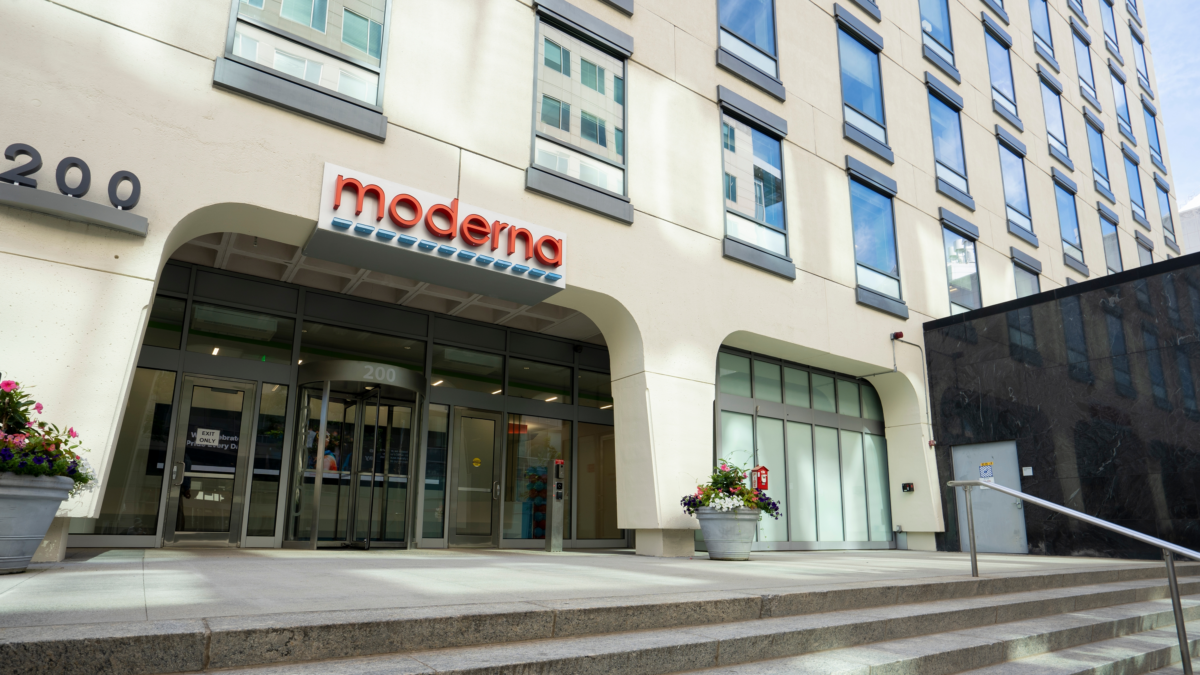
20) Moderna
2022 Revenue: Moderna had a total revenue of $19.26 billion in 2022, a 4.29 percent increase from $18.47 billion in 2021.
2022 Net Income: In 2022, Moderna’s net income was $8.36 billion, a 31.47 percent decrease from $12.20 billion in 2021.
2022 R&D Spend: Moderna spent $3.30 billion on R&D in 2022, a 65.49 percent increase from the $1.99 billion Moderna spent on R&D in 2021.
Moderna, a pharma and biotech company based in Massachusetts, specializes in RNA therapeutics, particularly mRNA vaccines. Its growth and success can largely be traced back to its state-of-the-art mRNA platform, which aims to develop treatments for various conditions such as infectious diseases, cancer, cardiovascular disease, rare diseases as well as do gene editing.
Through continual investment in R&D, Moderna has been able to swiftly increase its pipeline to include 48 development programs as of 2022. Out of these, one has already been commercialized, five are at the commercialization stage and four are in Phase III trials.
The company has made substantial progress in advancing its mRNA technology and broadening its portfolio of products to address a range of medical conditions. It has achieved encouraging Phase IIb results in the development of a personalized cancer vaccine and reported positive Phase III results for an RSV vaccine.
Supported by the growth of R&D and manufacturing facilities globally, in conjunction with government and commercial partnerships, Moderna’s pipeline continues to expand. These collaborations will allow Moderna to expedite the production of its foremost mRNA products and equip itself for future pandemics.
In 2022, the initiation of the Global Public Health Strategy facilitated Moderna’s development of vaccines against various pathogens, such as HIV, tuberculosis, malaria and neglected tropical diseases, using its innovative mRNA platform.
Moderna’s Best-Selling Product in 2022:
Moderna’s Spikevax was initially granted Emergency Use Authorization by the FDA amidst the pandemic. In 2022, the FDA proceeded to grant official licensing for Moderna’s Spikevax COVID-19 vaccine. This includes the Spikevax Bivalent Original/Omicron BA.4/5 and the Spikevax Bivalent Original/Omicron variants. This mRNA vaccine is designed for active immunization against COVID-19 and is also approved for use as a booster dose for individuals aged 18 and above. In 2022, the sales of Moderna’s COVID-19 vaccines amounted to roughly $18.4 billion. Spikevax was the fifth best-selling drug globally in 2022 by retail sales and significantly contributed to Moderna’s revenue growth for that year.
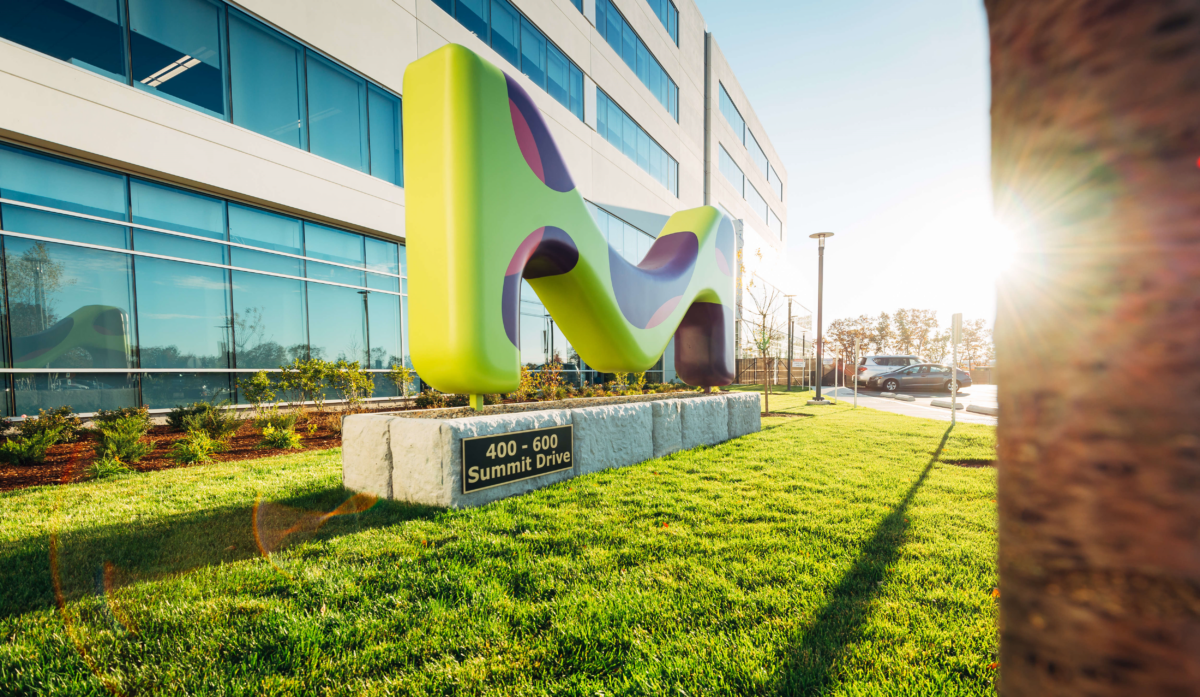
21) Merck KGaA
2022 Revenue: In 2022, Merck KGaA (Life Science and Healthcare divisions only) had an annual revenue of €18.22 billion ($19.19 billion USD), a 13.30 percent increase from €16.08 billion ($19.02 billion USD) in 2021.
2022 Net Income: Merck KGaA (Life Science, Healthcare and Electronics divisions) had an overall net income of €3.33 billion ($3.50 billion USD), a 8.87 percent increase from €3.06 billion ($3.61 billion USD) in 2021.
2022 R&D Spend: In 2022, Merck KGaA (Life Science and Healthcare divisions only) spent €2.02 billion ($2.13 billion USD) on R&D, a 1.70 percent decrease from the €2.06 billion ($2.43 billion USD) the company’s Life Science and Healthcare divisions spent on R&D in 2021.
Merck KGaA is a science and technology company with headquarters in Germany that operates in three business segments: Healthcare, Life Science and Electronics.
In the Healthcare segment, which operates in the US and Canada as EMD Serono, the company focuses on developing drugs, diagnostics and medical devices in therapeutic areas that include allergies, fertility, oncology and neurodegenerative diseases.
The Life Science business is comprised of MilliporeSigma, which provides products and solutions for biomedical research. This includes laboratory water systems, gene editing tools, cell lines and end-to-end drug manufacturing systems among others.
In 2022, Merck KGaA generated total revenues of about €18.22 billion from its Healthcare and Life Science segments.
Despite a challenging year, Merck KGaA delivered profitable growth in 2022, with group net sales increasing by 12.9 percent compared to the previous year.
In 2022, the company announced it would strengthen its base in China by building domestic supply chains in the country. It also predicted a decline in operating profit of up to ten percent in 2023. Merck also appointed Helene von Roeder as the new CFO of the company.
In 2023, the FDA put the brakes on the company’s multiple sclerosis drug evobrutinib for new patients in Phase III studies due to issues of tolerability, including potential liver injury.
Merck KGaA’s Top 5 Best-Selling Drugs of 2022:
1) Erbitux (cetuximab)
Erbitux is an epidermal growth factor receptor inhibitor that is used to treat metastatic colorectal cancer and head and neck cancer. Net sales of the chimeric antibody in 2022 were €1.02 billion ($1.08 billion USD), a growth of 3.65 percent from €987 million ($1.17 billion USD) in 2021. In its annual report, Merck KGaA cited that organic growth was particularly driven by the Asia-Pacific region (at 9.1 percent) in addition to Europe where organic growth was 4.8 percent. It also said “encouraging development” also occurred in Latin America, the Middle East and Africa. The list price of a month’s supply of Erbitux was reported to be $13,776.48 to $15,307.20, according to the manufacturer.
2) Glucophage (metformin)
Merck KGaA’s Glucophage continues to be the main first-line drug for the treatment of type 2 diabetes, especially in people who are overweight. It is also used to treat polycystic ovarian syndrome. Net sales of the medication totaled €930 million ($980 million USD) in 2022, which was up 7.64 percent from €864 million ($1.02 billion USD) from the previous year.
3) Rebif (interferon beta-1a)
Rebif is a cytokine belonging to the interferon family. It’s an immunomodulator used for the treatment of relapsing forms of multiple sclerosis. In 2022, net sales of the medication totaled to €887 million ($934 million USD), down 6.83 percent from €952 million ($1.13 billion USD) in 2021. The dent in sales is attributed to increasingly stiff competition in the interferon space as well as competition from oral forms and high-efficacy multiple sclerosis therapies, according to Merck KGaA’s annual report. Net sales of the drug declined in North America as well as Europe by 12.4 percent and 14.9 percent, respectively.
4) Mavenclad (cladribine)
Mavenclad is another one of Merck KGaA’s blockbuster multiple sclerosis drugs. Sales of the immunosuppressant grew by 23.52 percent in 2022 compared to 2021, with total net sales in 2022 amounting to €856 million ($902 million USD). The company said the organic growth was driven by increased demand in all regions and particularly in Europe.
5) Gonal-f (follitropin alfa)
Gonal-f is a part of the gonadotropins class of medications. It’s used to stimulate the ovaries to produce more eggs in one cycle. It is often used with other fertility treatments, particularly IVF. The injection remains the leading recombinant hormone in fertility treatment and continued to perform well for Merck KGaA in 2022, having garnered €825 million ($869 million USD) in global net sales by the end of 2022. This was a 7.56 percent increase from €767 million ($907 million USD) in 2021.
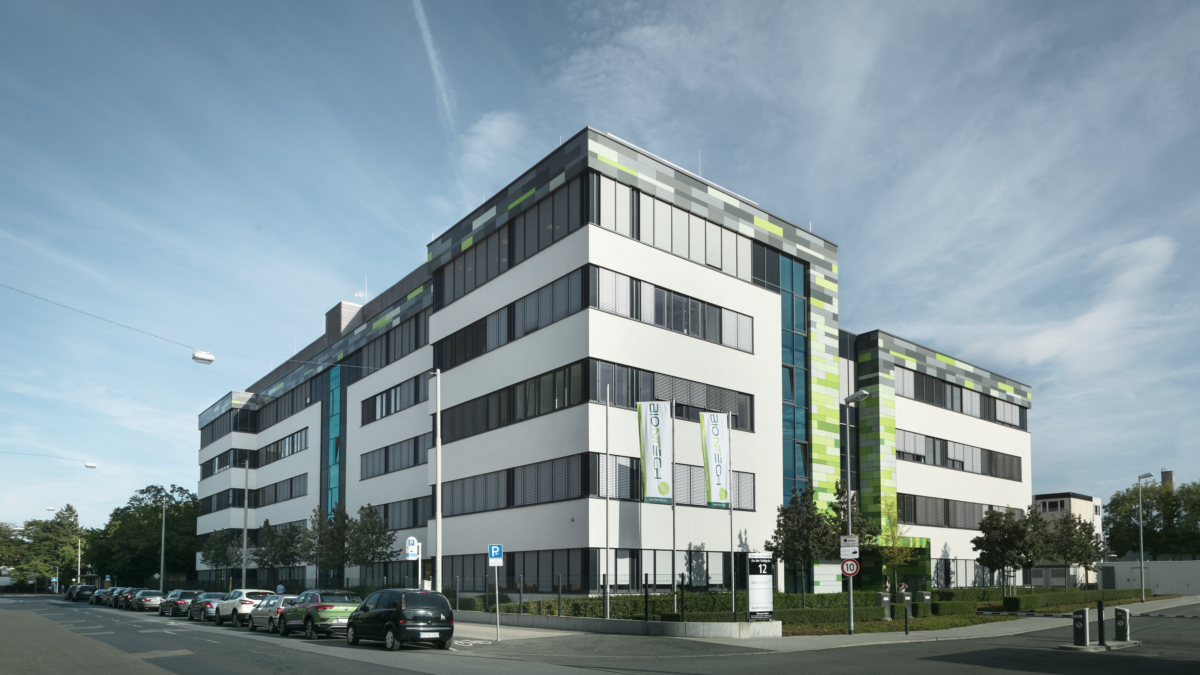
22) BioNTech SE
2022 Revenue: In 2022, BioNTech had a total annual revenue of €17.31 billion ($18.23 billion USD), an 8.78 percent decrease from €18.98 billion ($22.45 billion USD) in 2021.
2022 Net Profit: BioNTech’s net profit was €9.43 billion ($9.94 billion USD) in 2022, an 8.34 percent decrease from €10.29 billion ($12.18 billion USD) in 2021.
2022 R&D Spend: In 2022, BioNTech spent €1.54 billion ($1.62 billion USD) on R&D, a 61.93 percent increase from the €949 million ($1.12 billion USD) the company spent on R&D in 2021.
BioNTech SE is a German biotechnology company that gained worldwide recognition for developing one of the first approved vaccines (Comirnaty) for COVID-19 in collaboration with Pfizer. The company uses mRNA technology for its vaccines, which has led to its significant role in the global response to the COVID-19 pandemic.
BioNTech SE specializes in the development of immunotherapies, primarily mRNA-based vaccines, for the treatment of cancer and other diseases. It was founded in 2008 by Dr. Ugur Sahin and Dr. Özlem Türeci, a husband-and-wife team of scientists and physicians. The company is headquartered in Mainz, Germany.
BioNTech has a strong focus on R&D, collaborating with various academic institutions, pharmaceutical companies and organizations to advance its therapeutic platforms and pipeline. In addition to Pfizer, the company has established partnerships with industry leaders such as Genentech, Sanofi and Regeneron to leverage its mRNA technology for the development of potential treatments for various diseases.
The development and success of the Pfizer-BioNTech COVID-19 vaccine propelled BioNTech into the global spotlight, positioning the company as a leader in the field of mRNA-based vaccines and paving the way for further advancements in the treatment of diseases using this technology.
BioNTech’s financial performance in 2022 reflected its significant contributions to global public health. The company’s annual revenue was mainly driven by the sales of its COVID-19 vaccine, which was distributed globally. The vaccine is the company’s first and only approved product.
BioNTech’s Top-Selling Drug of 2022:
1) Comirnaty
Comirnaty is an mRNA-based vaccine indicated for the prevention of COVID-19. It was given Emergency Use Authorization by the FDA in December 2020 and then granted full approval in August 2021 for individuals over the age of 16. The list price of the vaccine in 2022 was $30.48 per dose.
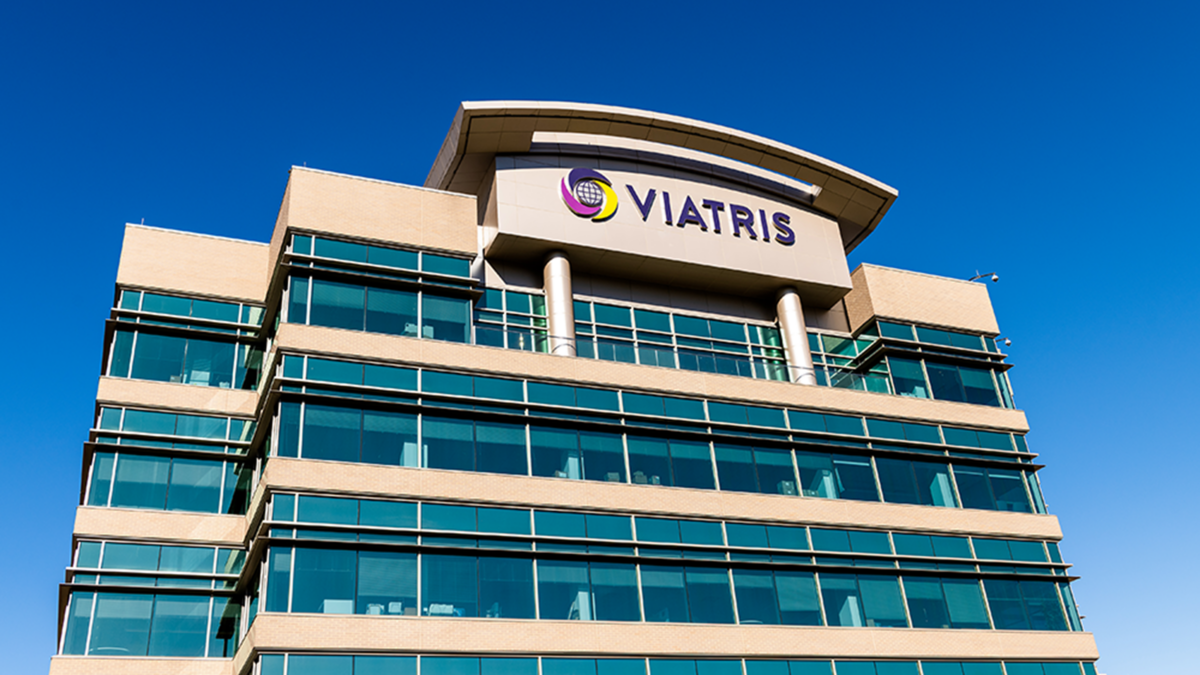
23) Viatris
2022 Revenue: In 2022, Viatris had an annual revenue of $16.22 billion, an 8.96 percent decrease from $17.81 billion in 2021.
2022 Net Income: Viatris had a net income of $2.08 billion in 2022, a 263.79 percent increase from the company’s net loss of $1.27 billion in 2021.
2022 R&D Spend: In 2022, Viatris spent $662 million on R&D, a 2.76 percent decrease from $681 million in 2021.
Viatris Inc. is an American global pharmaceutical and healthcare corporation with headquarters in Canonsburg, Pennsylvania. It was formed on November 16, 2020, through the merger of Mylan and Upjohn, a legacy division of Pfizer.
Viatris has several iconic blockbusters in its portfolio, which include big names like Lipitor, Viagra and Celebrex.
Viatris was recognized for its contributions to HIV treatment, ranking fifth on Fortune’s annual “Change the World” list in 2021. This accolade was earned by transforming the treatment of HIV around the world through the development of the first low-cost antiretroviral drug for first-line treatment of HIV and a children’s version of the drug in the form of fruit-flavored tablets that dissolve in liquid.
2022 was a busy year of partnerships and acquisitions for Viatris. In February 2022, Viatris entered into an agreement with Biocon Biologics, contributing its biosimilars portfolio and related commercial and operational capabilities in exchange for up to $3.335 billion, including a stake of at least 12.9 percent in Biocon Biologics. The transaction was completed in November 2022. In the same month, Viatris agreed to acquire Oyster Point Pharma and Famy Life Sciences for an aggregate of $700 million to 750 million to create an ophthalmology division, with the acquisitions closing in January 2023.
Viatris’ Top 5 Best-Selling Drugs of 2022:
1) Lipitor (atorvastatin)
Lipitor continues to be a stalwart for Viatris, having brought in $1.64 billion in sales in 2022, which was down slightly from $1.66 billion in the previous year. Lipitor belongs to a group of drugs known as statins, which are used to lower bad cholesterol and fats (such as LDL and triglycerides) and raise good cholesterol (HDL) in the blood. It is also used to reduce the risk of stroke, heart attack and other heart complications in people with type 2 diabetes, coronary heart disease or other risk factors.
2) Norvasc (amlodipine besylate)
Norvasc is a calcium channel blocker that works to relax blood vessels, which helps to reduce blood pressure and makes it easier for the heart to pump blood. It is used to treat high blood pressure and chest pain (angina), and can be used alone or in combination with other medications to help manage these conditions. Net sales of Norvasc amounted to $775.1 million in 2022, which was down from $824.7 million in 2021.
3) Lyrica (pregabalin)
Lyrica is an anticonvulsant and neuropathic pain agent that is primarily used to manage conditions like epilepsy, neuropathic pain and fibromyalgia. It is thought to work by calming down overactive nerve cells in the brain and spinal cord that are involved in seizure activity and in transmitting pain signals. Net sales of Lyrica at the end of 2022 totalled $623.8 million.
4) Viagra (sildenafil)
Viagra remains another blockbuster for Viatris, having brought in $458.9 million for the company in 2022. Viagra is used to treat erectile dysfunction (ED) and pulmonary arterial hypertension (PAH). It works by blocking phosphodiesterase type 5 (PDE5) to promote the dilation, or opening, of blood vessels.
5) Celebrex (celecoxib)
Celebrex is used to relieve pain and inflammation. It is a nonsteroidal anti-inflammatory (NSAID), and more specifically, a type of NSAID called a COX-2 inhibitor. Celebrex is used to treat pain or inflammation caused by many conditions such as arthritis, ankylosing spondylitis and menstrual pain. It is also used in the treatment of hereditary polyps in the colon. Celebrex’s net sales in 2022 totalled $338.1 million.
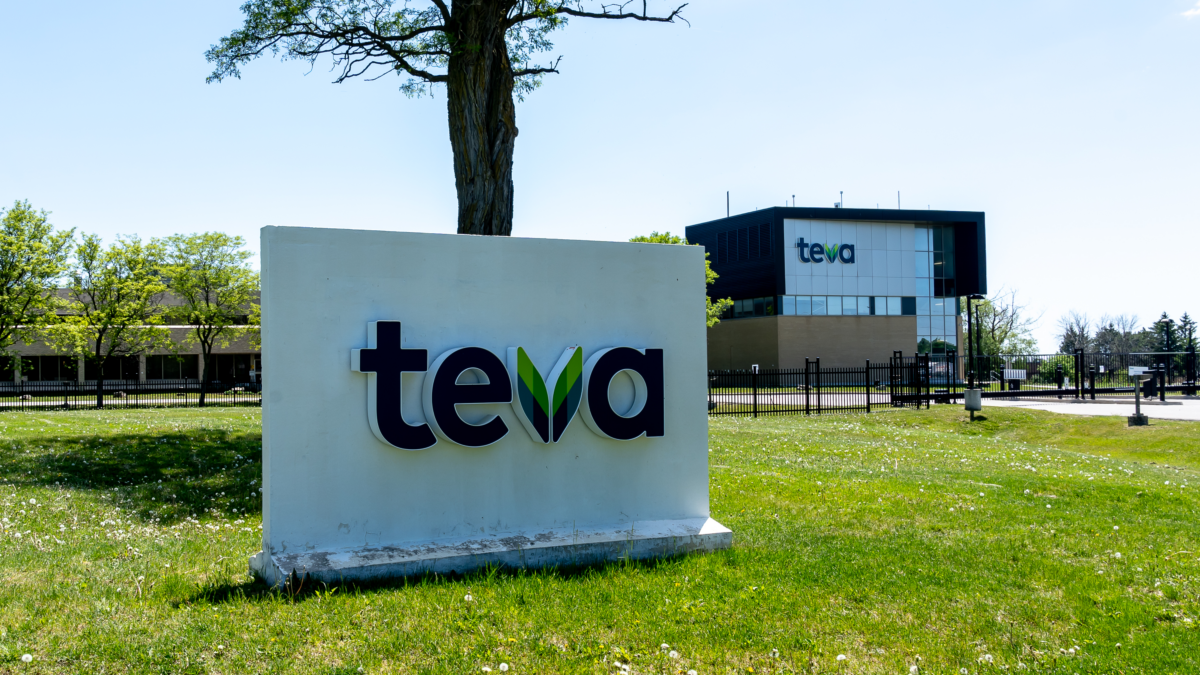
24) Teva Pharmaceuticals
2022 Revenue: In 2022, Teva Pharmaceuticals had a revenue of $14.93 billion, a 6.00 percent decrease from $15.88 billion in 2021.
2022 Net Income: Teva Pharmaceuticals had a net income (loss) of $2.41 billion in 2022, a 627.63 percent decrease from a net income (gain) of $456 million in 2021.
2022 R&D Spend: In 2022, Teva Pharmaceuticals spent $838 million on R&D, a 13.34 percent decrease from the $967 million the company spent on R&D in 2021.
Teva Pharmaceutical Industries Ltd. is an Israeli multinational pharmaceutical company that was established in 1901. It is one of the largest generic drug manufacturers in the world.
Teva produces a wide range of drugs treating numerous conditions. It is known for generic pharmaceuticals but also develops and produces specialty medications and active pharmaceutical ingredients. Its product portfolio includes treatments for multiple sclerosis, asthma, pain, cancer and infectious diseases, among other conditions.
In recent decades, Teva has significantly expanded its operations through several major acquisitions. These include the purchase of Ivax Corporation in 2006, Barr Pharmaceuticals in 2008 and Actavis Generics from Allergan in 2016. These purchases helped Teva expand its generic and specialty drug portfolio and grow its presence in key markets like the US and Europe.
The company has, however, faced some significant challenges. It has been involved in multiple lawsuits and legal controversies, including allegations of price fixing, and it has grappled with high levels of debt following its large-scale acquisitions.
Teva Pharmaceuticals’ Best-Selling Drugs in 2022:
1) Austedo (deutetrabenazine)
Austedo emerged in the top spot for Teva revenue wise, hitting $963 million in net sales in 2022. Austedo is used to treat certain movement disorders by reducing the amount of dopamine that is present in high levels in some conditions. It is approved for chorea associated with Huntington’s disease, which is one of the symptoms of the condition that is characterized by involuntary, jerky movements. It is also approved for Tardive dyskinesia, a side effect of long-term or high-dose use of antipsychotic drugs, characterized by involuntary and repetitive body movements. The drug was first approved by the FDA in 2017. The list price of Austedo XR (extended release) was reported to be $2,360.25 to $7,080.70 for a monthly supply, according to the manufacturer.
2) Copaxone (glatiramer acetate)
Copaxone is used to treat MS, specifically relapsing forms of multiple sclerosis to reduce the frequency of relapses. It is used to manage the disease by reducing the number of flare-ups and slowing the accumulation of physical disability. Copaxone slipped to the second spot for the first time in several years, dropping from $2.36 billion in sales in 2018 and gradually declining over the past four years to $387 million in 2022. The sharp decline has come from stiff competition from generics that have been entering the market over the past several years.
3) Treanda/Bendeka (bendamustine hydrochloride)
Treanda/Bendeka are chemotherapy drugs used to treat CLL and B-cell non-Hodgkin lymphoma. While both are the same drug, it takes less time to administer the same dosage of Bendeka compared to Treanda (ten minutes versus 60 minutes, respectively). The second difference is that Bendeka is compatible with polycarbonate or acrylonitrile-butadiene-styrene (ABS)-containing infusion equipment while Treanda injection is not. Total sales of the two were $316 million in 2022.
4) Ajovy (fremanezumab)
Ajovy is used for the prevention of migraines in adults. It is a class of monoclonal antibody that targets and blocks the activity of calcitonin gene-related peptide (CGRP), a molecule believed to play a crucial role in migraine attacks. Ajovy’s total revenue in 2022 was $218 million. The list price for an Ajovy autoinjector was reported to be $603.20, according to the manufacturer.
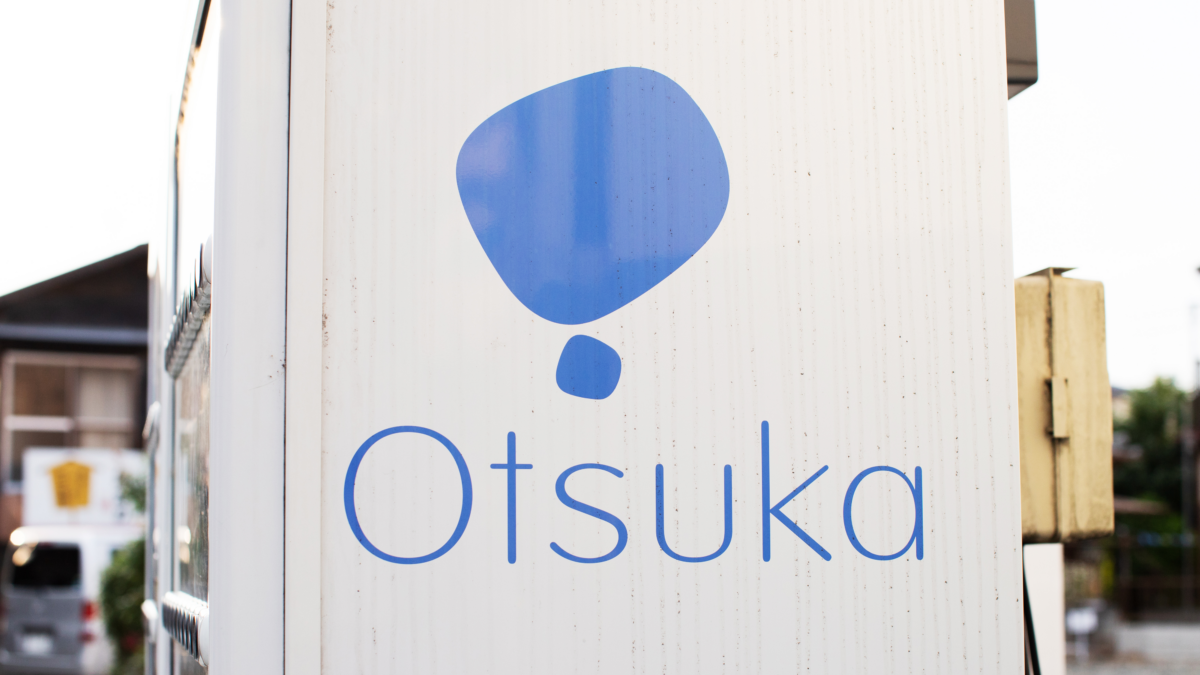 25) Otsuka Holdings
25) Otsuka Holdings
2022 Revenue: In 2022, Otsuka Holdings had an annual revenue of 1.74 trillion JPY ($13.22 billion USD), a 16.00 percent increase from 1.50 trillion JPY ($13.64 billion USD) in 2021.
2022 Profit: Otsuka Holdings had a profit of 137.42 billion JPY ($1.05 billion USD) in 2022, a 5.97 percent increase from 129.21 billion JPY ($1.18 billion USD) in 2021.
2022 R&D Spend: In 2022, Otsuka Holdings spent 275.23 billion JPY ($2.09 billion USD) on R&D, an 18.48 percent increase from the 232.30 billion JPY ($2.11 billion USD) the company spent on R&D in 2021.
Otsuka Holdings Co., Ltd., known in its native Japan as Ōtsuka Seiyaku Kabushiki-gaisha, is a major pharmaceutical company founded in 1921 and currently headquartered in Tokyo, Osaka, and Naruto, Japan.
Otsuka Holdings made history in 2010 when it joined the Tokyo Stock Exchange through an initial public offering (IPO), raising $2.4 billion, the largest IPO for a pharmaceutical company up to that time.
In the pharmaceutical sector, Otsuka has made several significant acquisitions and partnerships. It announced a strategic focus on central nervous system disorders and oncology in 2012, which included ending some immunology collaborations while continuing to collaborate in the central nervous system area. It acquired several pharmaceutical companies, including Astex Pharmaceuticals in 2013 for close to $900 million, Avanir Pharmaceuticals for $3.54 billion in 2014 and Neurovance, Inc. in 2017 for $250 million. It also bought Daiya in 2017, and in 2018, agreed to acquire Visterra for $430 million cash and renal-focused ReCor Medical.
This year, Taiho Pharmaceutical, a subsidiary of Otsuka, entered into a clinical trial agreement with Arcus Biosciences and Gilead Sciences. In May, Otsuka and Lundbeck received FDA approval for Rexulti (brexpiprazole) for the treatment of agitation symptoms associated with dementia due to Alzheimer’s disease. Other notable developments include the acquisition of additional equity in Otsuka Pharmaceutical India Private Limited and the FDA approval for Abilify Asimtufii (aripiprazole), the first two-month, long-acting injectable for the treatment of schizophrenia or maintenance monotherapy treatment of bipolar I disorder in adults.
Some of Otsuka Pharmaceutical’s most well-known products include CalorieMate, Pocari Sweat, Oronamin C and Aripiprazole/Abilify.
Otsuka’s Top Global Products of 2022:
1) Rexulti (brexpiprazole)
Rexulti is a prescribed medication used in conjunction with antidepressant drugs for the treatment of major depressive disorder in adults. Rexulti is also indicated for the treatment of schizophrenia in patients ages 13 years and older, and for the treatment of agitation associated with dementia resulting from Alzheimer’s disease. The treatment was first approved by the FDA in 2015. Sales of Rexulti totaled 169.14 billion JPY ($1.29 billion USD) in 2022, up 39.7 percent from 2021. The list price of Rexulti was reported to be $1,419 per month, according to the manufacturer.
2) Abilify Maintena (aripiprazole)
Abilify Maintena is an effective monthly maintenance therapy for stabilizing bipolar I symptoms in adults, assisting in the management of the condition. The treatment was first approved by the FDA in 2002. In 2022, Abilify Maintena totaled 165.35 billion JPY ($1.26 billion USD) in sales, up 26.9 percent from 2021. According to the manufacturer, the list price of Abilify Maintena was reported to be $2,388.47.
3) Jynarque (tolvaptan)
Jynarque is a selective vasopressin V2-receptor antagonist designed to decelerate the decline of kidney function in adults who are at risk of experiencing rapid progression of autosomal dominant polycystic kidney disease (ADPKD). Jynarque was first approved by the FDA in 2018. In 2022, sales of Jynarque totaled 139.41 billion JPY ($1.06 billion USD), up 38.9 percent from 2021.
4) Samsca (tolvaptan)
Samsca is a selective vasopressin V2-receptor antagonist indicated for the management of clinically significant hypervolemic and euvolemic hyponatremia (serum sodium <125 mEq/L or less pronounced hyponatremia that causes symptoms and has not responded to fluid restriction), which includes patients with heart failure and syndrome of inappropriate antidiuretic hormone (SIADH). Samsca was first approved by the FDA in 2009. Sales of Samsca totaled 87.79 billion JPY ($667.80 million USD), down 4.6 percent from 2021.
5) Lonsurf (trifluridine/tipiracil)
Lonsurf is a combination of trifluridine, a nucleoside metabolic inhibitor, and tipiracil, a thymidine phosphorylase inhibitor. It is indicated for the treatment of adult patients with the following conditions: Metastatic colorectal cancer who have received prior treatment with fluoropyrimidine-, oxaliplatin- and irinotecan-based chemotherapy, an anti-VEGF biological therapy, and if they have RAS wild-type, an anti-EGFR therapy; or metastatic gastric or gastroesophageal junction adenocarcinoma previously treated with at least two prior lines of chemotherapy that included a fluoropyrimidine, a platinum, either a taxane or irinotecan, and if appropriate, HER2/neu-targeted therapy. Lonsurf was first FDA approved in 2015. Sales of Lonsurf totaled 57.50 billion JPY ($437.40 billion USD) in 2022, up 24.8 percent from 2021.
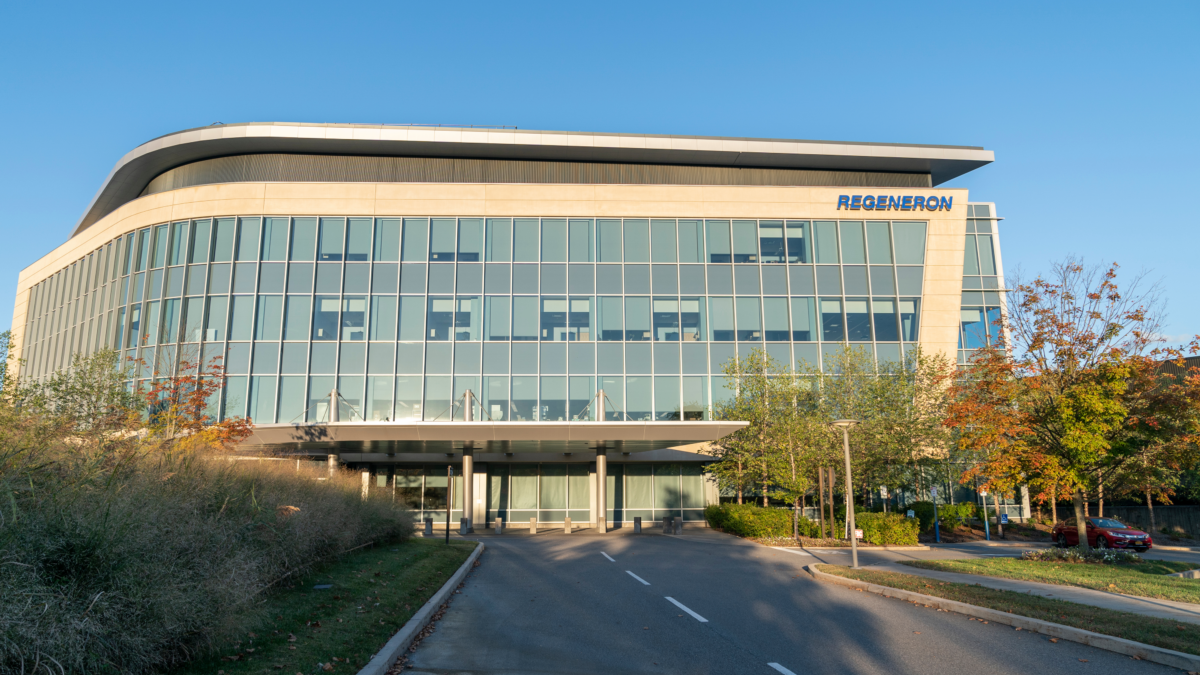 26) Regeneron Pharmaceuticals
26) Regeneron Pharmaceuticals
2022 Revenue: In 2022, Regeneron Pharmaceuticals had an annual revenue of $12.17 billion, a 24.26 percent decrease from $16.07 billion in 2021.
2022 Net Income: Regeneron Pharmaceuticals had a net income of $4.34 billion in 2022, a 46.28 percent decrease from $8.08 billion in 2021.
2022 R&D Spend: In 2022, Regeneron Pharmaceuticals spent $3.59 billion on R&D, a 25.61 percent increase from the $2.86 billion the company spent on R&D in 2021.
Regeneron Pharmaceuticals, Inc. is a biotechnology company that develops medications for the treatment of serious medical conditions. Founded in 1988 and headquartered in Tarrytown, New York, Regeneron has developed and commercialized drugs for diseases in several areas, such as oncology, eye diseases, allergic and inflammatory diseases, pain, cardiovascular disease and infectious diseases.
Regeneron’s Top 5 Best-Selling Drugs of 2022:
1) Eylea (aflibercept)
Eylea is used for the treatment of wet age-related macular degeneration, macular edema following retinal vein occlusion, diabetic macular edema and diabetic retinopathy. The drug continues to be a blockbuster for Regeneron as it brought in $9.65 billion for Regeneron in 2022. The list price of Eylea was reported to be $1,850.00 for a single-dose vial or prefilled syringe, according to the manufacturer.
2) Dupixent (dupilumab)
Dupixent is a monoclonal antibody that blocks IL-4 and IL-13, key causes of allergic diseases. Blocking these interleukins reduces the inflammatory response in the body. It is indicated for eczema, severe asthma, eosinophilic esophagitis and prurigo nodularis. Dupixent was first approved by the FDA in March 2017. Regeneron reported $8.68 billion in total sales of Dupixent in 2022. The list price of Dupixent was reported to be $3,587.92 per carton, according to the manufacturer.
3) REGEN-COV (casirivimab and imdevimab)
In response to the COVID-19 pandemic, Regeneron developed an antibody cocktail (REGN-COV2, later named REGEN-COV), a combination of two monoclonal antibodies (casirivimab and imdevimab) designed specifically to block infectivity of SARS-CoV-2, the virus that causes COVID-19. The cocktail was granted Emergency Use Authorization by the FDA in November 2020. In 2022, REGEN-COV brought in $1.77 billion in global sales excluding the US.
4) Libtayo (cemiplimab-rwlc)
Libtayo is used to treat patients with metastatic cutaneous squamous cell carcinoma (CSCC) or locally advanced CSCC who are not candidates for curative surgery or curative radiation. In 2022, net sales of Libtayo amounted to $578.0 million. The list price of Librayo was reported to be $9,100 per three-week treatment cycle.
5) Praluent (alirocumab)
Praluent is indicated for the treatment of adults with heterozygous familial hypercholesterolemia or clinical atherosclerotic cardiovascular disease who require additional lowering of LDL cholesterol. In 2022, Praluent brought in $467.4 million in sales. The list price of Praluent was reported to be $5,850 annually.
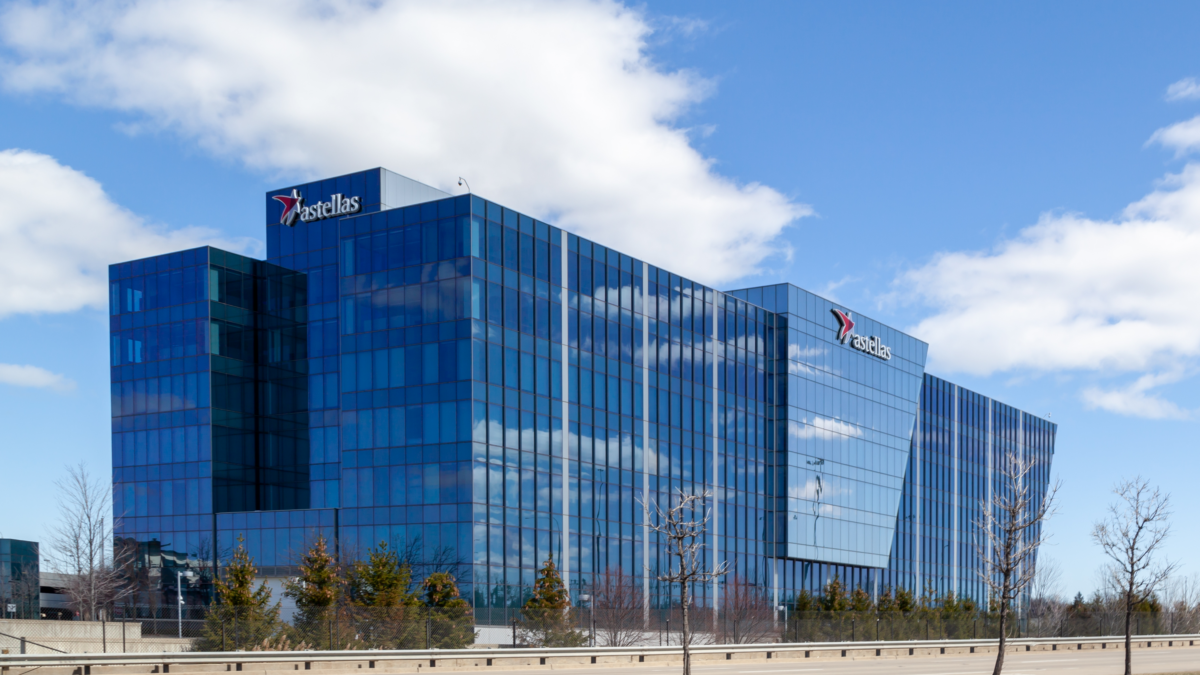
27) Astellas Pharma
2022 Revenue: Astellas Pharma’s annual revenue for the year ended March 31, 2023, was $1.52 trillion JPY ($11.55 billion USD), a 17.16 percent increase from $1.30 trillion JPY ($11.80 billion USD) for the year ended March 31, 2022.
2022 Core Profit: For the year ended March 31, 2023, Astellas Pharma’s core profit was 224.62 billion JPY ($1.71 billion USD), a 15.15 percent increase from 190.58 billion JPY ($1.74 billion USD) for the year ended March 31, 2023.
2022 R&D Spend: Astellas Pharma spent 276.13 billion JPY ($2.10 billion USD) on R&D for the year ended March 31, 2023, a 12.24 percent increase from the 246.01 billion JPY ($2.24 billion USD) the company spent on R&D for the year ended March 31, 2022.
Astellas Pharma Inc. is a Japanese multinational pharmaceutical company, established on April 1, 2005, through the merger of Yamanouchi Pharmaceutical Co., Ltd. and Fujisawa Pharmaceutical Co., Ltd.
The company’s areas of focus include urology, immunology, cardiology, dermatology and infectious diseases. It also works in the field of oncology and neuroscience.
Astellas operates a number of research facilities around the world and actively participates in the development of new drug candidates, from the research stage through clinical trials.
Astellas is headquartered in Tokyo, Japan, but its operations extend globally. It has affiliates in Europe, Asia and the Americas.
Astellas Pharma’s Top 5 Best-Selling Drugs of the 2022 Fiscal Year:
1) Xtandi (enzalutamide)
Xtandi is used in the treatment of patients with prostate cancer who no longer respond to hormonal therapy or surgical treatment to lower testosterone, as well as in metastatic castration-resistant prostate cancer. It was first approved by the FDA in 2012. Xtandi has remained Astellas’ best seller for the past couple of years. Total global sales of Xtandi amounted to 661.1 billion JPY ($5.03 billion USD) for the year ended March 31, 2023. The list price of Xtandi was reported to be $13,649.97 for a pack of 120 capsules (40 mg), a pack of 120 tablets (40 mg) or a pack of 60 tablets (80 mg), according to the manufacturer.
2) Prograf (tacrolimus)
Prograf is an immunosuppressant used to prevent and treat organ rejection in individuals who have undergone liver, kidney, heart or lung transplants. It is often used in conjunction with other medications to lower the risk of rejection. It is a macrolide lactone that was discovered in the fermentation broth of a Japanese soil sample that contained the bacterium Streptomyces tsukubensis. Global sales of Prograf totalled 198.8 billion JPY ($1.51 billion USD) for the year ended March 31, 2023. The list price of Prograf varies depending on the dosage form and strength.
3) Betanis/Myrbetriq/Betmiga
Betanis/Myrbetriq/Betmiga (mirabegron) is a beta-2 adrenergic agonist used for the treatment of overactive bladder (OAB) with symptoms of urge urinary incontinence, urgency, urinary frequency and leakage. Total global revenue of Betanis/Myrbetriq/Betmiga for the year ended March 31, 2023, reached 188.6 billion JPY ($1.43 billion USD).
4) Xospata (gilteritinib)
Xospata is used to treat acute myeloid leukemia (AML) with a FMS-like tyrosine kinase (FLT3) mutation. The FLT3 small molecule inhibitor was first approved by the FDA in 2018 for relapsed or refractory AML. Total sales of Xospata hit 46.6 billion JPY ($354.48 billion USD) for the year ended March 31, 2023. The list price of Xospata (40 mg tablets, pack of 90) was reported to be $27,315.61, according to the manufacturer.
5) Padcev (enfortumab vedotinis-ejfv)
Padcev is an antibody-drug conjugate used in the treatment of adults with bladder cancer as well as cancers of the urinary tract (renal pelvis, ureter or urethra) that has metastasized or cannot be removed by surgery. Padcev is a nectin-4 targeting antibody and microtubule inhibitor conjugate. For the year ended March 31, 2023, net global sales of Padcev totalled 44.4 billion JPY ($337.75 million USD). The list price of Padcev was reported to be $2,651.00 for a single-dose vial with a strength of 20 mg or $3,976.50 for a single dose vial with a strength of 30 mg, according to the manufacturer.
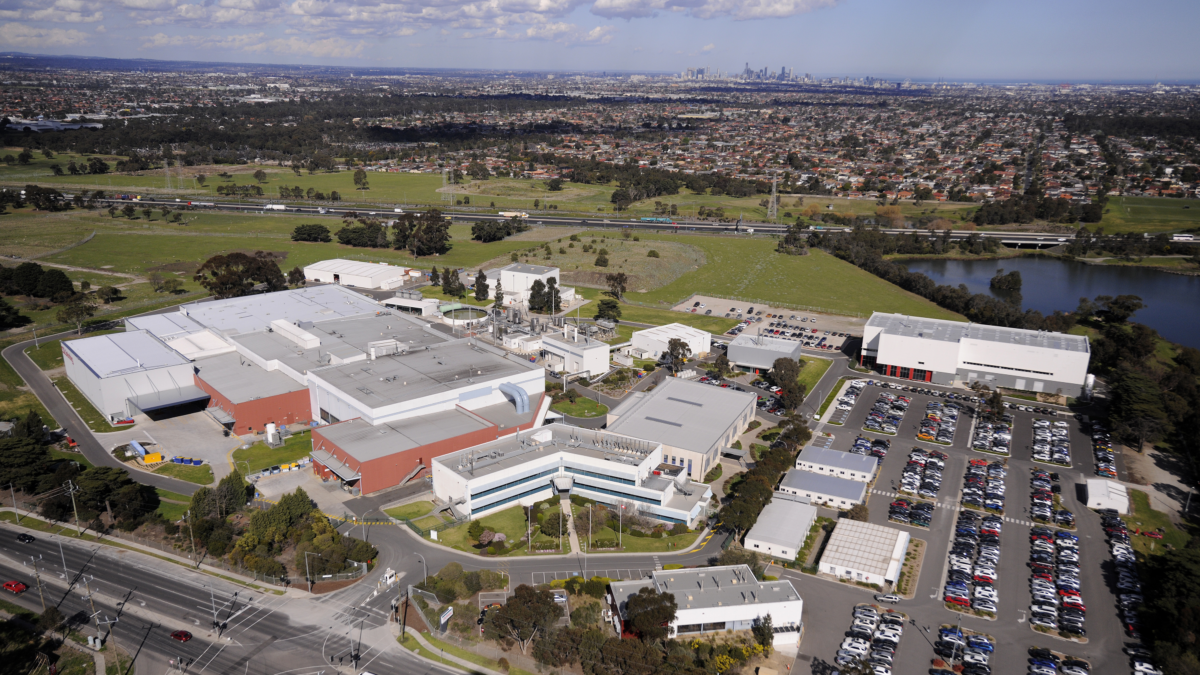
28) CSL Limited
2022 Revenue: In 2022, CSL Limited had a total operating revenue of $10.56 billion, a 2.44 percent increase from $10.31 billion in 2021.
2022 Net Profit: CSL Limited had a net income of $2.25 billion in 2022, a 5.07 percent decrease from $2.38 billion in 2021.
2022 R&D Spend: In 2022, CSL Limited spent $1.16 billion on R&D, a 15.46 percent increase from the $1.00 billion the company spent on R&D in 2021.
CSL Limited is a global specialty biotechnology company that researches, develops, manufactures and markets products to treat and prevent serious human medical conditions. The company’s primary focus includes the production of vaccines and plasma protein biotherapies.
It has expanded globally in the fields of immunology, hematology, cardiovascular and metabolic diseases and influenza vaccines.
CSL’s two major businesses are CSL Behring and Seqirus. CSL Behring is a global leader in plasma protein biotherapies, using cutting-edge technology to develop and manufacture therapies for rare and serious diseases. Their products are used to treat coagulation disorders including hemophilia and von Willebrand disease, primary immune deficiencies, hereditary angioedema, inherited respiratory disease and neurological disorders.
Seqirus, created in 2015, is the second-largest influenza vaccine provider in the world. They use both egg-based and cell-based manufacturing technologies and have leading adjuvant technology for influenza vaccines.
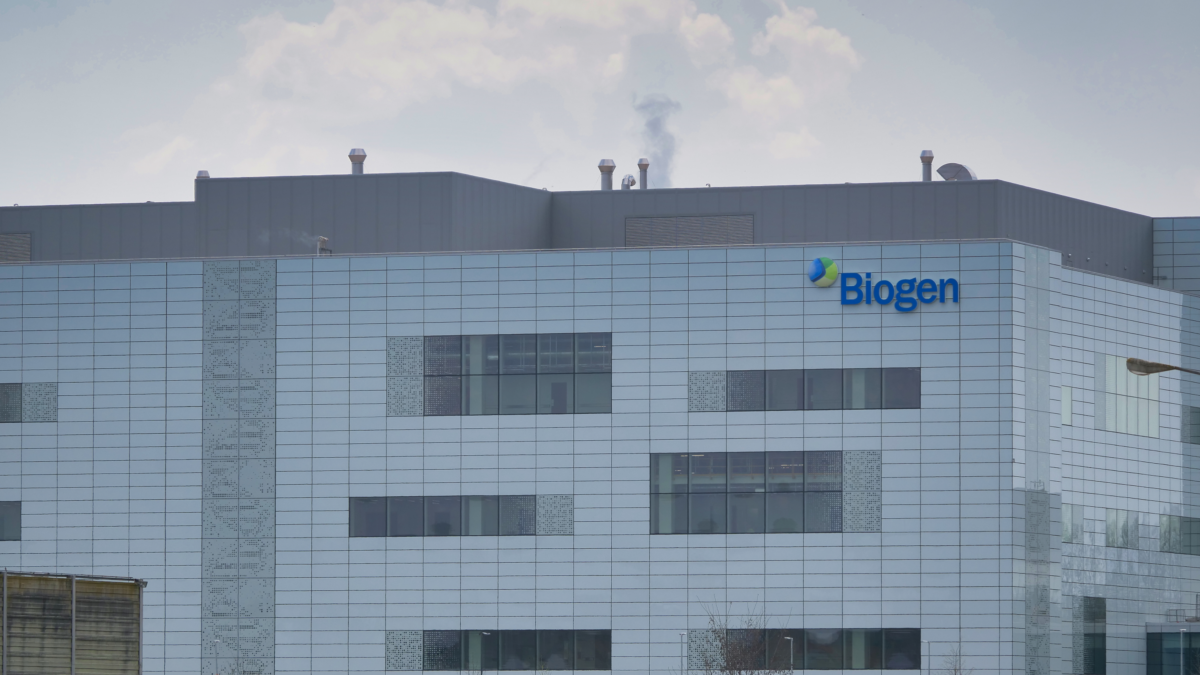
29) Biogen
2022 Revenue: In 2022, Biogen’s total revenue was $10.17 billion, a 7.36 percent decrease from $10.98 billion in 2021.
2022 Net Income: The net income attributable to Biogen was $3.05 billion in 2022, a 95.80 percent increase from $1.56 billion in 2021.
2022 R&D Spend: In 2022, Biogen spent $2.23 billion on R&D, a 10.80 percent decrease from the $2.50 billion the company spent on R&D in 2021.
Biogen Inc. is an American multinational biotechnology company specializing in the discovery, development and delivery of therapies for the treatment of neurodegenerative, hematologic and autoimmune diseases to patients worldwide. It is one of the oldest independent biotech companies in the world.
The company’s product portfolio includes drugs for treating multiple sclerosis, spinal muscular atrophy and Alzheimer’s disease, among other conditions. Some of its best-known products include Tecfidera (dimethyl fumarate), Tysabri (natalizumab), Avonex (interferon beta-1a) and Spinraza (nusinersen).
In June 2021, Biogen received FDA approval for Aduhelm (aducanumab), the first new Alzheimer’s disease treatment approved in nearly two decades, and the first to supposedly target the disease process itself rather than the symptoms; however, this approval was surrounded by controversy due to mixed clinical trial results and concerns about its high price.
Biogen’s Top 5 Best-Selling Drugs of 2022:
1) Tysabri (natalizumabin)
Tysabri is used to treat relapsing forms of multiple sclerosis as well as Crohn’s disease. The drug was first approved by the FDA in 2004. It has been one of Biogen’s main drivers of growth for the past several years. Global sales of Tysabri in 2022 totalled $2.03 billion to make it Biogen’s top seller of the year.
2) Spinraza (nusinersen)
Spinraza, first approved by the FDA in 2016, is indicated for the treatment of spinal muscular atrophy in pediatric and adult patients. It was the first treatment for spinal muscular atrophy to be approved by the FDA. Net global revenue of Spinraza in 2022 totaled $1.79 billion.
3) Tecfidera (dimethyl fumarate)
Tecfidera is another key multiple sclerosis drug in Biogen’s multiple sclerosis product portfolio. It’s used to treat relapsing forms of multiple sclerosis. Tecfidera was first approved by the FDA in 2013. In 2022, the total global revenue from sales of Tecfidera was $1.44 billion.
4) Avonex (interferon beta-1a)
Avonex is a cytokine belonging to the interferon family that is used for the treatment of multiple sclerosis. It helps to decrease flare-ups and may help slow the progression of the disease. Avonex was first approved by the FDA in 1996. Total sales of Avonex were $973.5 million in 2022.
5) Vumerity (diroximel fumarate)
Vumerity is another fumarate-based multiple sclerosis immunomodulator from Biogen that is also used to treat relapsing forms of multiple sclerosis. Compared with Tecfiera, Vumerity is better tolerated and causes less gastrointestinal issues owing to its chemical structure. Vumerity was approved by the FDA in 2019. Rounding out the top five best-selling drugs for Biogen is Vumerity, which brought in $553.4 million in global revenue in 2022.
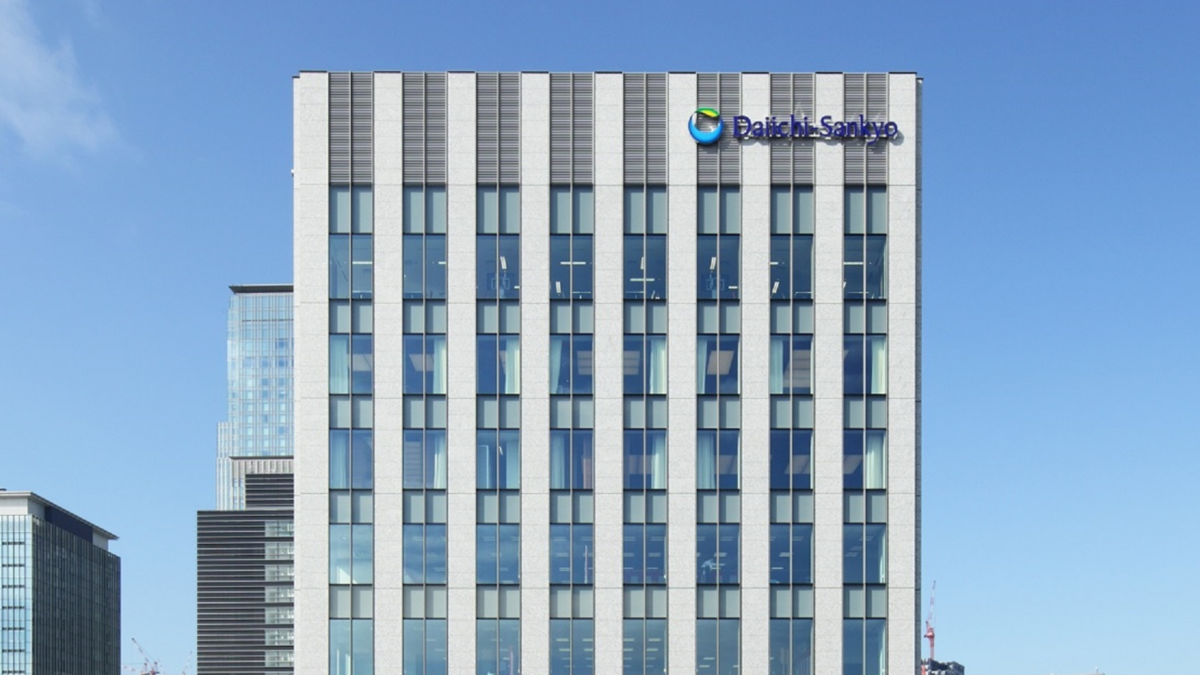
30) Daiichi Sankyo
2022 Revenue: For the year ended March 31, 2023, Daiichi Sankyo had an annual revenue of $1.28 trillion JPY ($9.73 billion USD), an 18.27 percent increase from $1.04 trillion JPY ($9.51 billion USD) for the year ended March 31, 2022.
2022 Profit: Daiichi Sankyo’s profit for the year ended March 31, 2023, was 109.19 billion JPY ($830.59 million USD), a 63.04 percent increase from 66.97 billion JPY ($609.71 million USD) for the year ended March 31, 2022.
2022 R&D Spend: For the year ended March 31, 2023, Daiichi Sankyo spent 341.57 billion JPY ($2.60 billion USD) on R&D, a 31.21 percent increase from the 260.33 billion JPY ($2.37 billion USD) the company spent on R&D for the year ended March 31, 2022.
Daiichi Sankyo Company, Limited is a global pharmaceutical company and the second largest pharmaceutical company in Japan. It was formed in 2005 through the merger of Sankyo Company, Limited (founded in 1899) and Daiichi Pharmaceutical Company, Limited (founded in 1935).
The company conducts research, development, manufacturing and marketing of pharmaceutical products. Its areas of focus include cardiovascular disease, diabetes, metabolic disorders and infectious diseases, among others. Daiichi Sankyo also has a growing presence in the field of oncology, with several drugs in development and on the market.
One of the company’s most notable drugs is Benicar (olmesartan), an angiotensin II receptor antagonist for treating high blood pressure. Other drugs include Lixiana (edoxaban), a drug for the prevention of stroke and systemic embolism, and Tarceva (erlotinib), a drug for the treatment of non-small cell lung cancer (NSCLC) and pancreatic cancer.
The company operates in several countries around the world and has a broad portfolio of generic drugs as well as proprietary pharmaceuticals. It also has a significant presence in the vaccine market in Japan.
To have your company featured on Xtalks, please email Ayesha Rashid, PhD, at: [email protected] or Vera Kovacevic, PhD, at: [email protected]

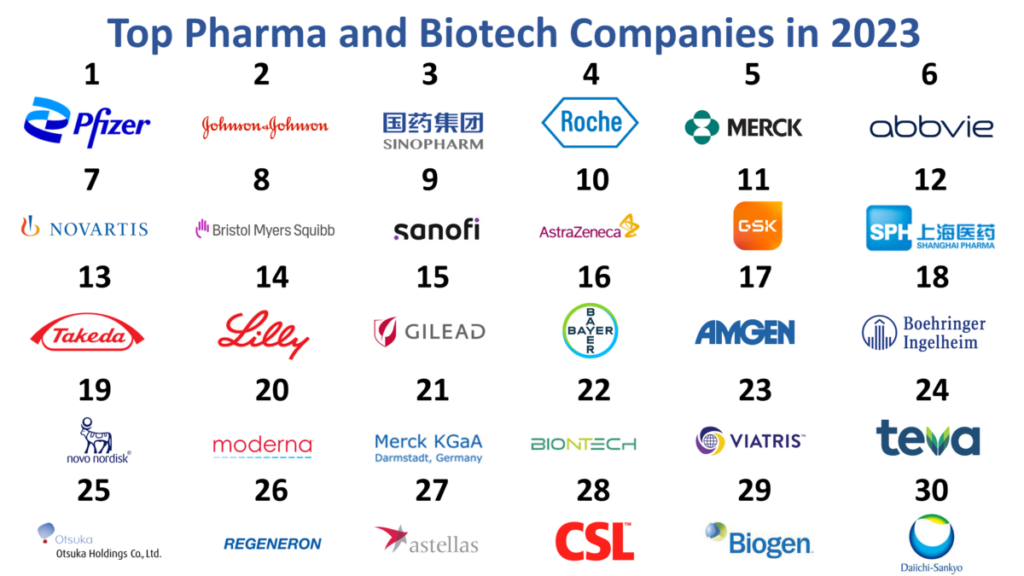




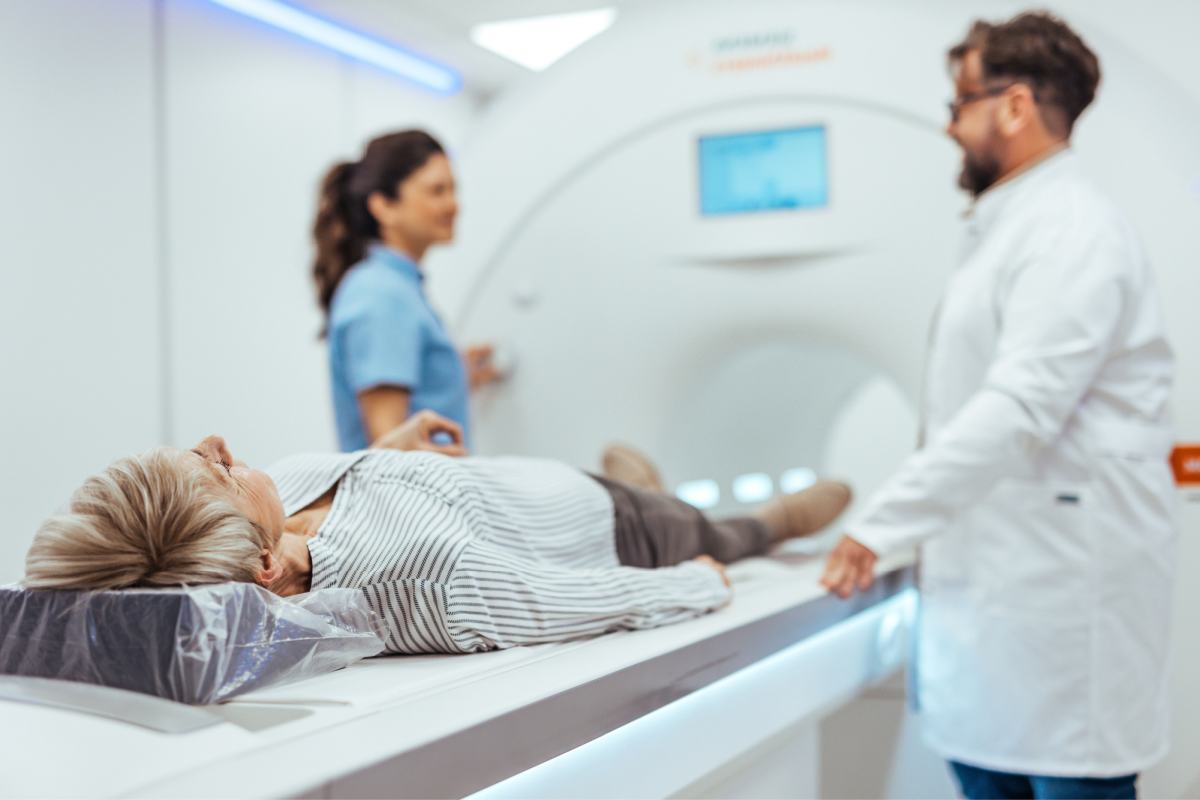





Join or login to leave a comment
JOIN LOGIN